Florence is a city of art, history and majestic architecture that takes visitors back to the Renaissance. We went to this city with our little ones, which added a special flavor to our trip. On the one hand, it meant more planning and worries, on the other hand, it allowed us to see the city from a new side, through the prism of children’s eyes.
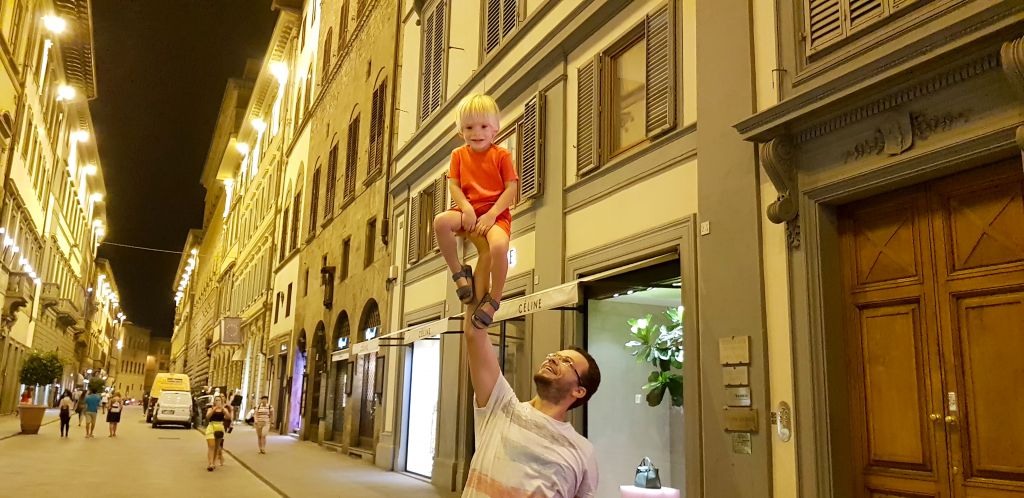
The trip was a combination of discovering cultural heritage and family joys, because Florence turned out to be not only a city of museums and cathedrals, but also a place where you can find simple pleasures, such as fountains with drinking water, park areas for children and cozy cafes.
i
However, as with any trip, there were some difficulties – moving along narrow streets and pavements with a two-seater stroller turned out to be a challenge. But despite this, every day spent in Florence brought new discoveries and impressions, and we immersed ourselves in its unique atmosphere.
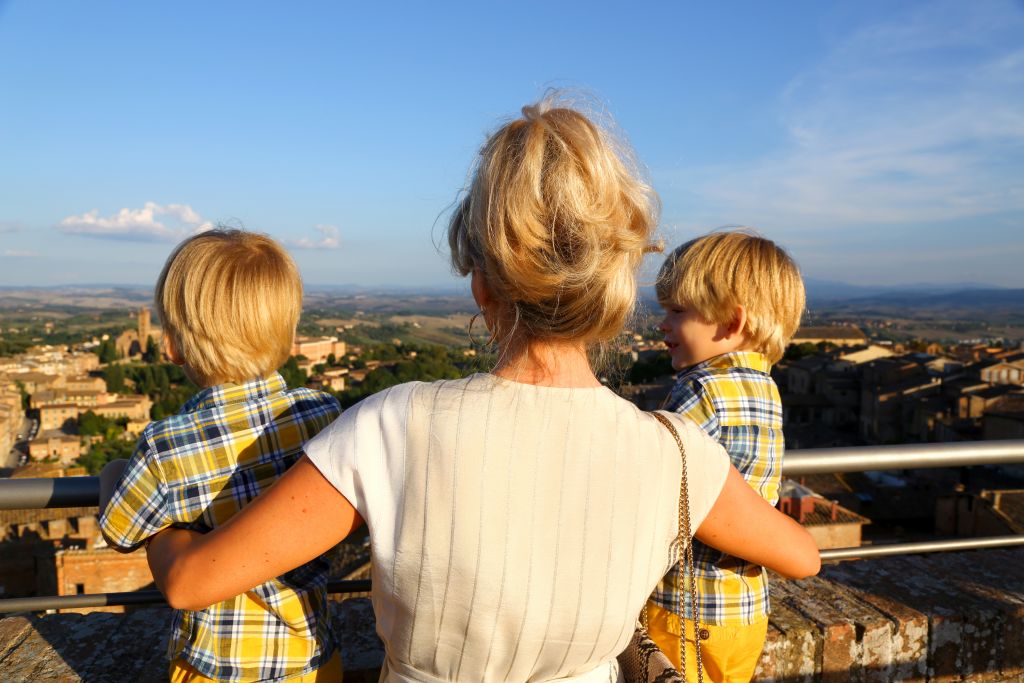
Accommodation
i
We rented an apartment in the center of Florence, close to shops and within walking distance of the city center. We were lucky that the apartment had its own garage — otherwise there was nowhere to park the car. By the time we arrived in Florence, we had already been traveling around Italy for quite a while and really wanted to explore this city to the fullest.
As usual, the first thing we did was buy lots of toys for the kids so that they would be busy at home all the time that we were not walking, and then we went in search of playgrounds.
i
The daily routine, as usual, revolved around feeding the children and their sleeping time, but we thought out all the walking routes in advance so that there would be something for them to enjoy, and we would also have time to see what interested us (for example, art galleries) while they were asleep in the stroller.
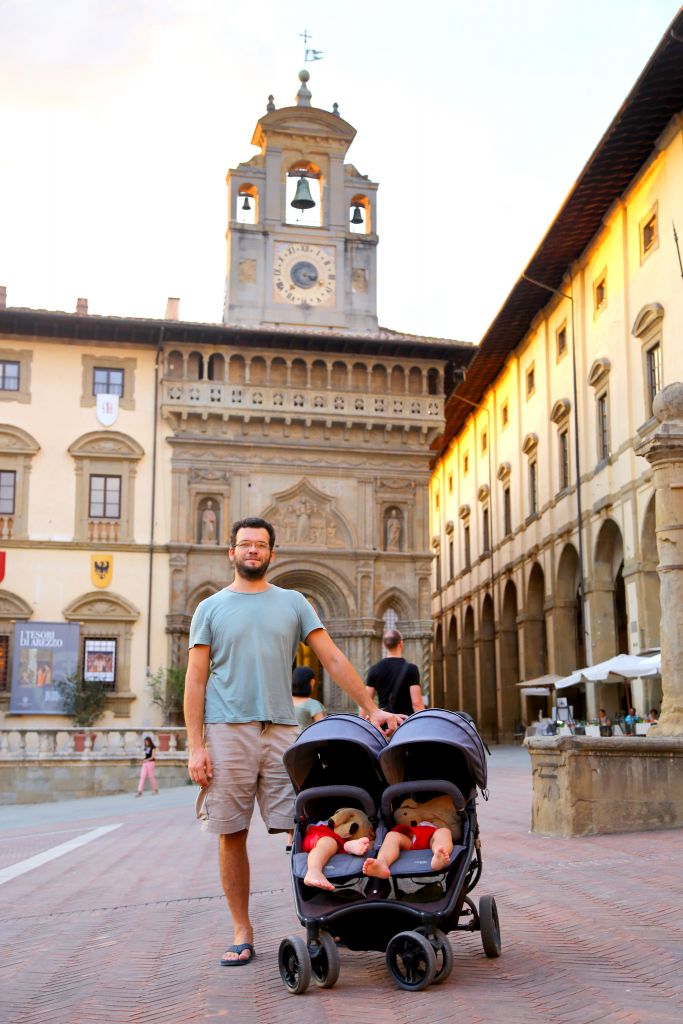
Soda machines in the streets
i
Quite often in Florence we came across soda machines, which became a real salvation on hot days. This tradition of drinking water can be traced back to medieval times, when the city thrived thanks to its system of aqueducts and fountains.
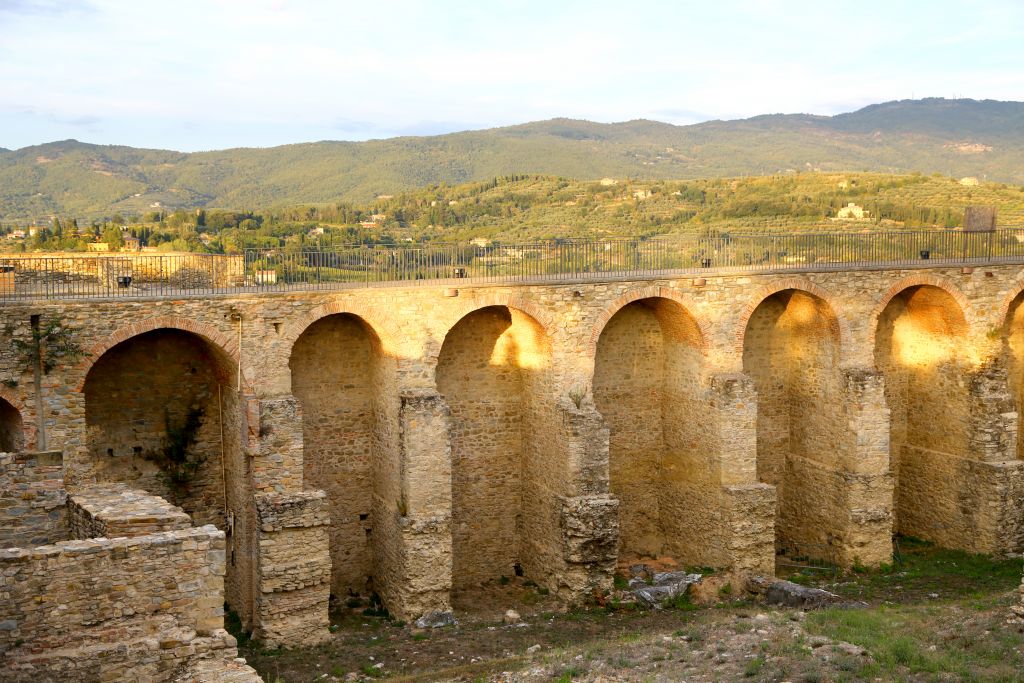
Water has always been an important element of city life, and today this tradition is preserved through the many public fountains. Soda fountains are a modern convenience, especially valuable when traveling with children, who often need extra rest and refreshment.
Finding ourselves at one of these fountains, we were reminded of how ancient cities had a developed culture of public access to water. Florentines are proud of the purity of their water, and we also enjoyed this simple joy, feeling how closely modern conveniences intertwine with the ancient traditions of the city.
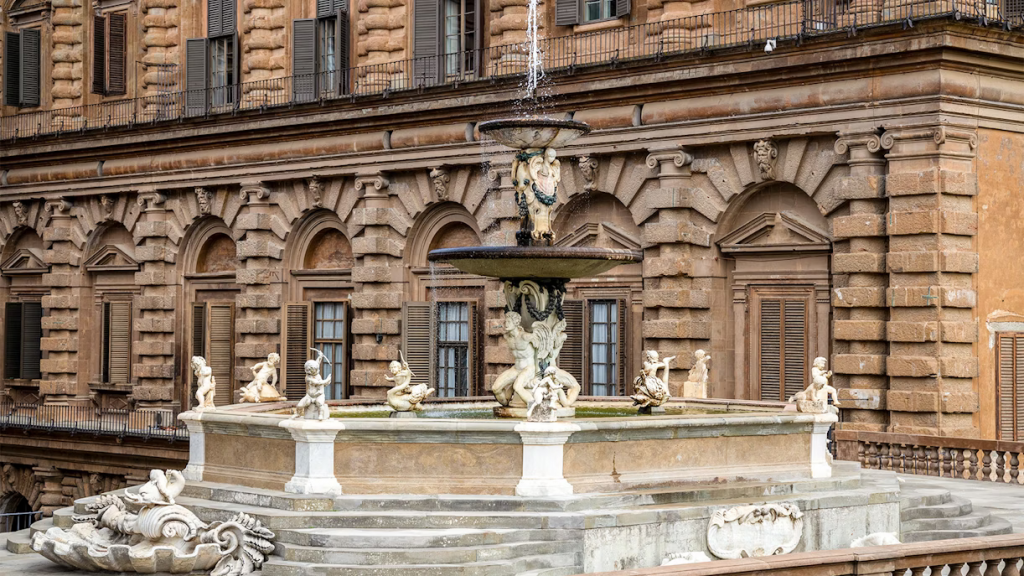
The difficulties of traveling by car
i
Getting around Florence by car turned out to be a real challenge. Narrow streets filled with tourists, endless traffic jams and the incredible difficulty of finding parking made our car trip a puzzle.
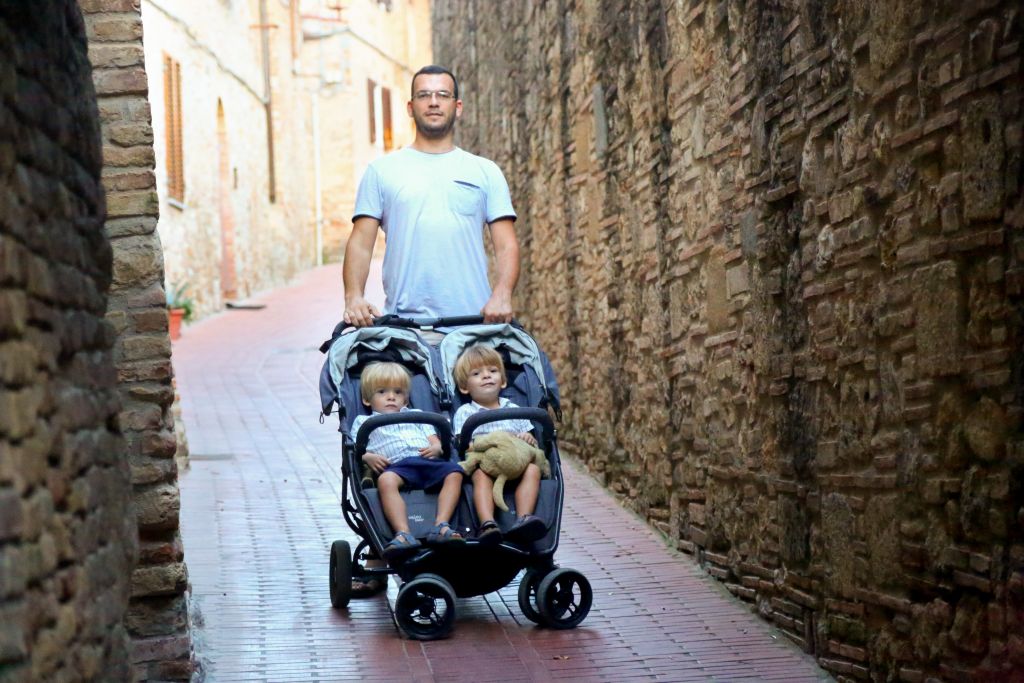
Finding a parking space in the city center is almost impossible — there is a strict traffic restriction zone (ZTL) and many streets are simply inaccessible to private vehicles. Even on the outskirts of the city, finding a free space was not so easy.
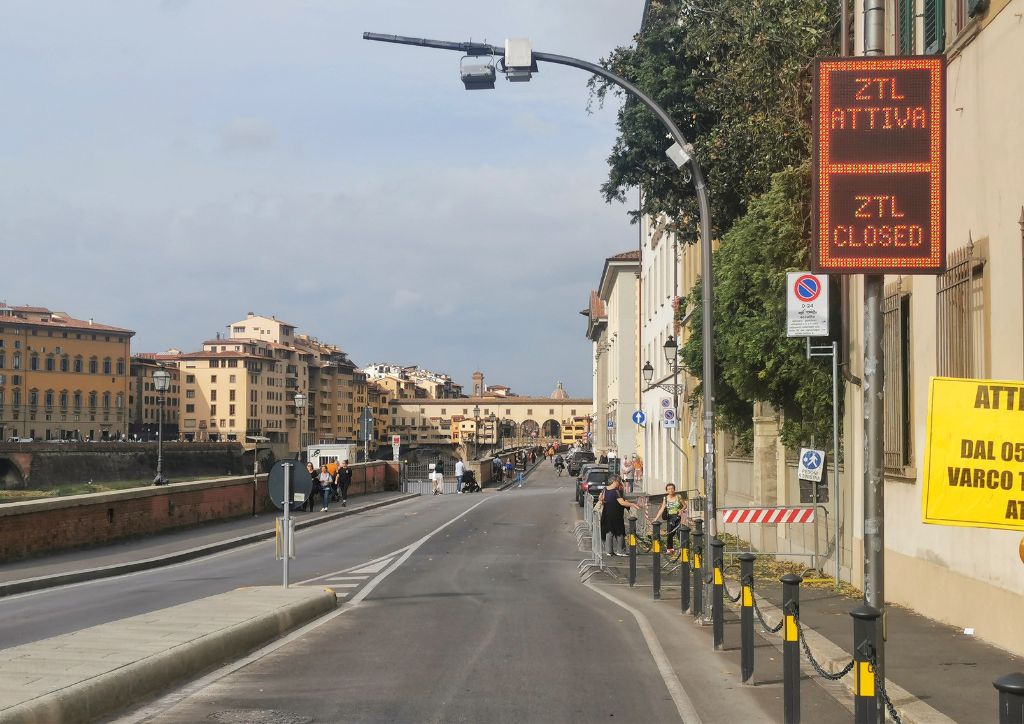
We quickly realized that traveling around Florence by car is not the best idea, especially with two children who constantly require attention. Public transport became our salvation. Buses in Florence run frequently and cover all the main attractions of the city. Tickets are inexpensive, and navigation is simple enough that even tourists can easily figure out the routes. Moreover, the children enjoyed riding the buses, it became a small adventure for them.
We recommend everyone who travels around Florence to give up the car and use public transport or just walk. It is not only more convenient, but also allows you to enjoy the atmosphere of the city, because every step along the old streets is a walk through the centuries.
Cathedral of Santa Maria del Fiore (Duomo)
i
Santa Maria del Fiore is a cathedral that amazes with its grandeur and architectural innovation.
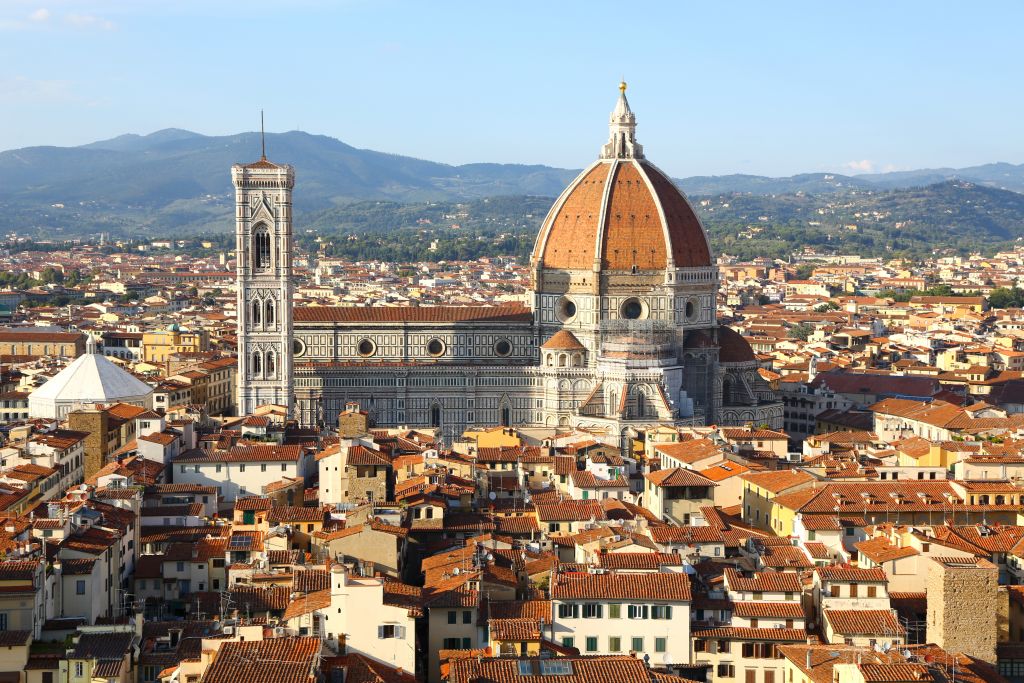
Its construction began in 1296 under the direction of the architect Arnolfo di Cambio, but it was the dome designed by Filippo Brunelleschi that became the symbol of the city. Brunelleschi proposed a revolutionary solution: building a dome without supporting structures. It was a real engineering puzzle for its time, and after its completion in 1436, the cathedral became the most important architectural achievement of the Renaissance.
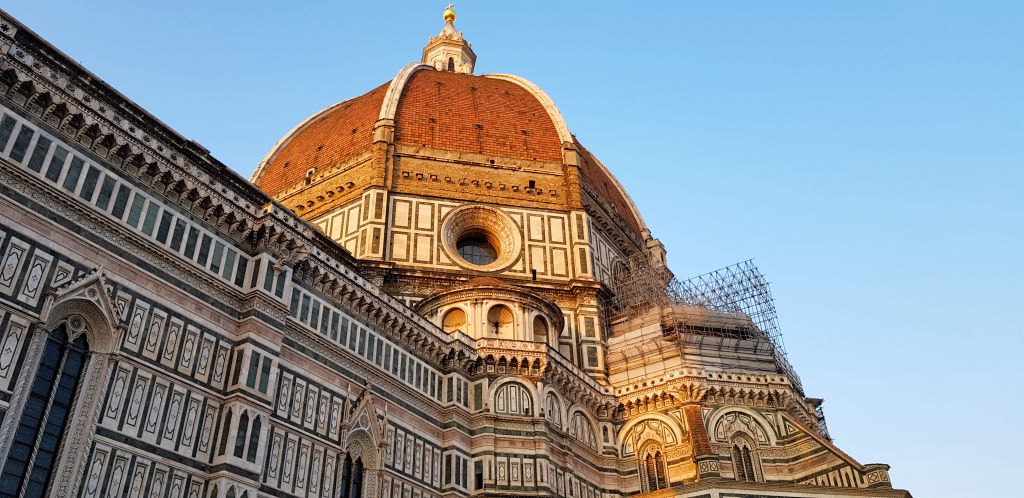
Climbing the dome with two children was not as easy as we expected. The staircase has more than 400 steps, and at each turn new breathtaking views open up. The historical paintings of the dome, depicting the “Last Judgement”, were made by Giorgio Vasari and Federico Zuccari. The children were amazed by the vivid and dramatic images of angels, demons and judgement scenes that cover the entire interior dome.
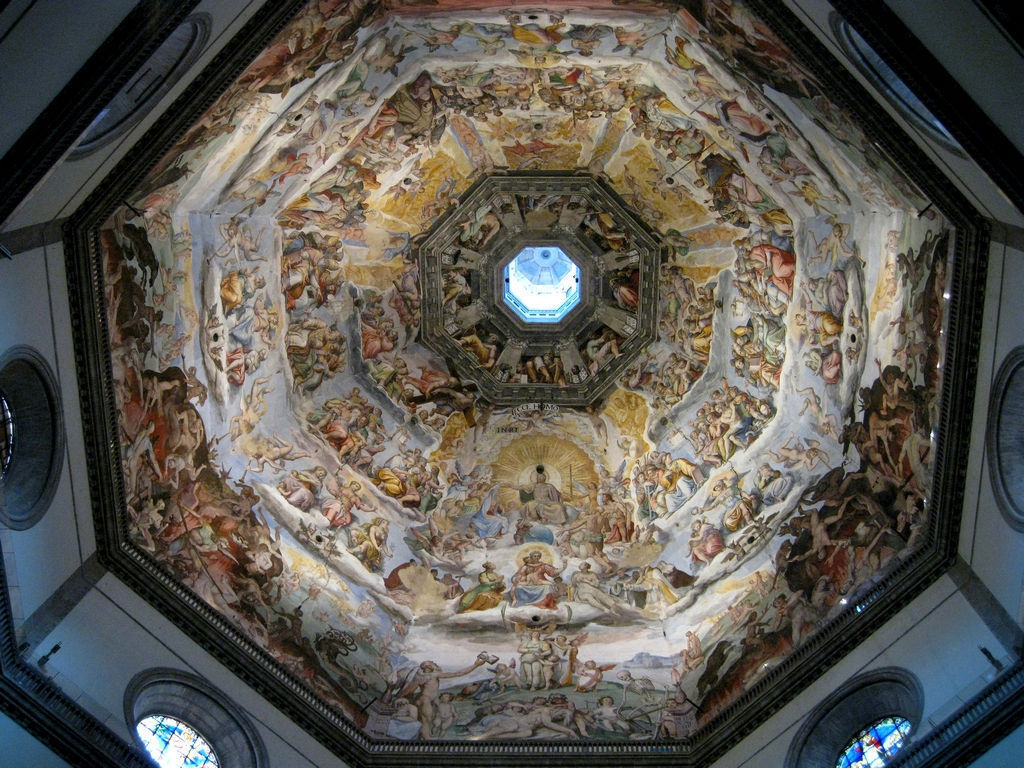
When we finally reached the top, we were treated to a stunning view of Florence. The red rooftops of the city and the calm waters of the Arno River created a sense of harmony and tranquility.
The cathedral itself, with its majestic marble façade in white, green and pink, symbolizes the marriage of science and art, which became the leitmotif of the Renaissance. Florence, as a center of humanism and innovation, reflected its thirst for beauty and knowledge in this magnificent temple.
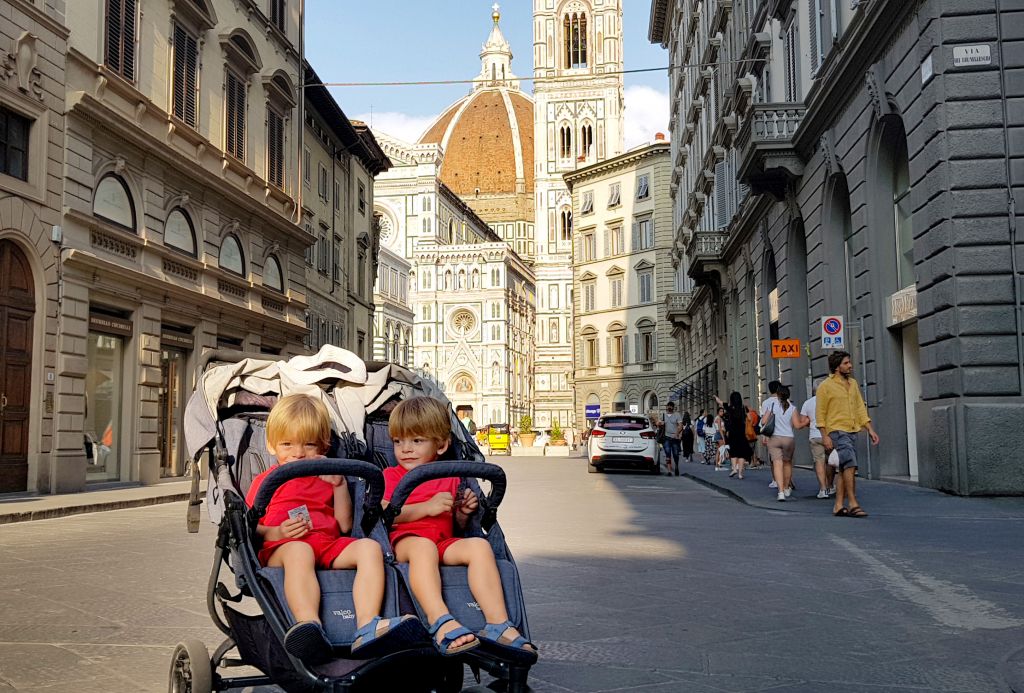
Cathedral Square (Piazza Duomo)
i
Piazza Duomo is always full of life. Tourists from all over the world meet here, and Florentines rush about their business. We found a small cafe near the cathedral, where we could calmly relax and observe the rhythm of life of the city. From the very beginning of its existence, Piazza Duomo was not only a religious, but also a political and social center. Over the centuries, important city events, religious processions, as well as meetings of citizens took place here. Here you can feel how the city “breathes” history.
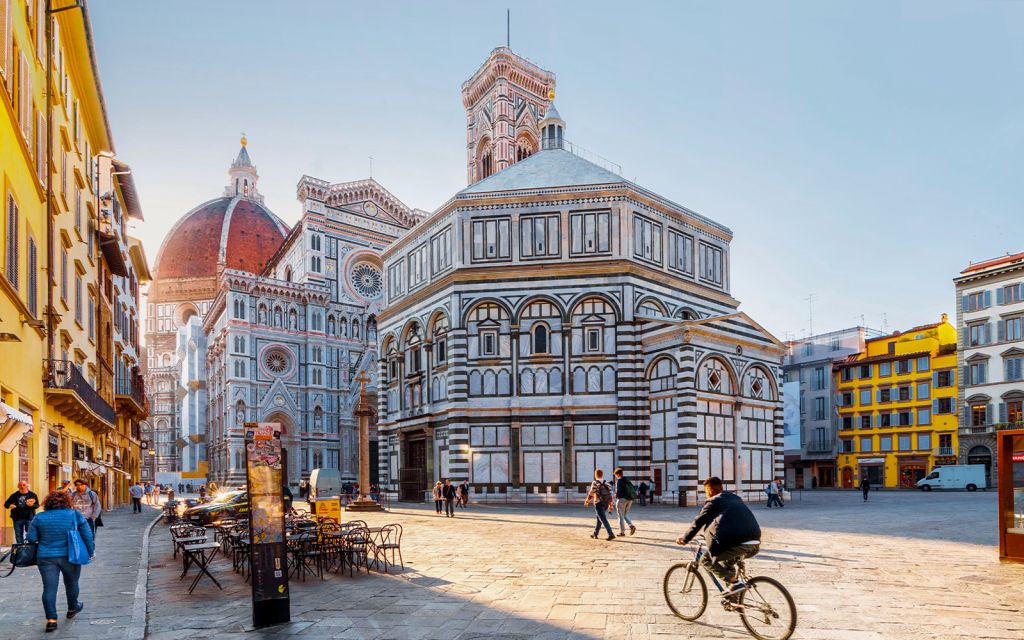
Florence has experienced serious political upheavals, starting with the Guelph-Ghibelline struggle in the 13th century, and the Duomo square was one of the arenas for these events. Every stone here is steeped in history, and sitting in a cafe, we could imagine how passions boiled here several centuries ago.
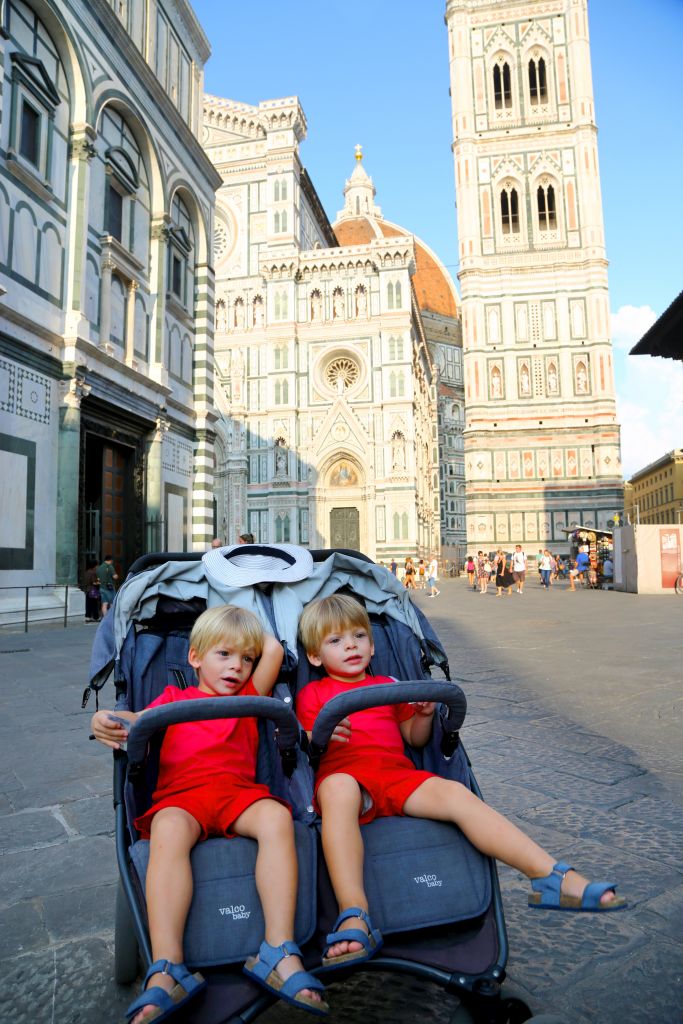
Piazza della Signoria
i
The Piazza della Signoria has been the heart of Florence’s political life since its foundation. Since the completion of the Palazzo Vecchio in 1314, the square has become a symbol of power. Important events that shaped the history of the city took place in the Piazza della Signoria. The reformer monk Girolamo Savonarola was executed here in 1498, after which the square became the site of frequent public executions and rallies.
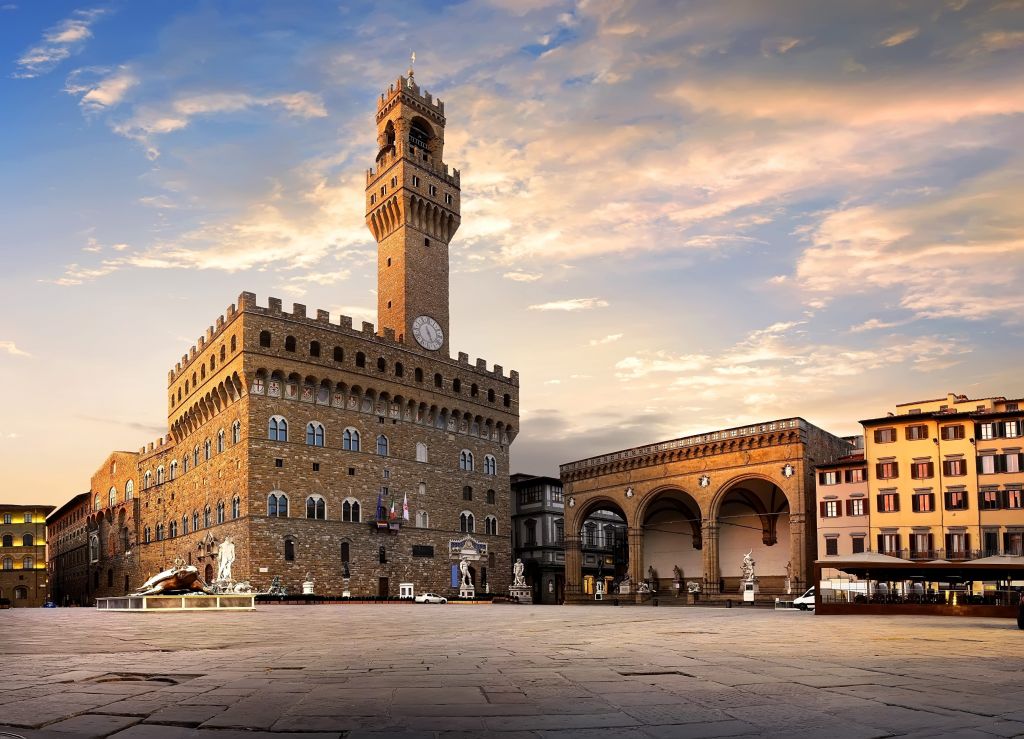
The Palazzo Vecchio is not just an architectural marvel, but a symbol of Florence’s political power.
i
Built for the city magistrates, it later became the residence of the Medici family, and its halls are decorated with frescoes and paintings telling the history of the city.
i
We spent some time looking at the statues in the square, among which the children especially liked the statue of David (a copy) standing in front of the palace.
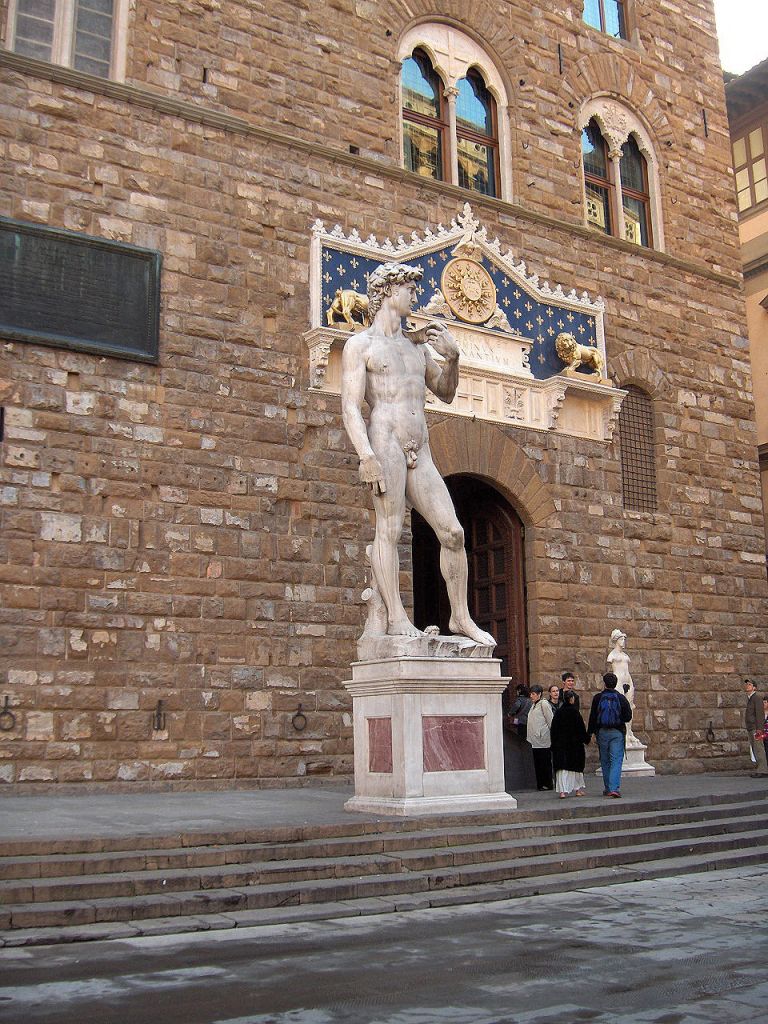
For me and the children, Piazza della Signoria was a special place where we felt history coming to life.
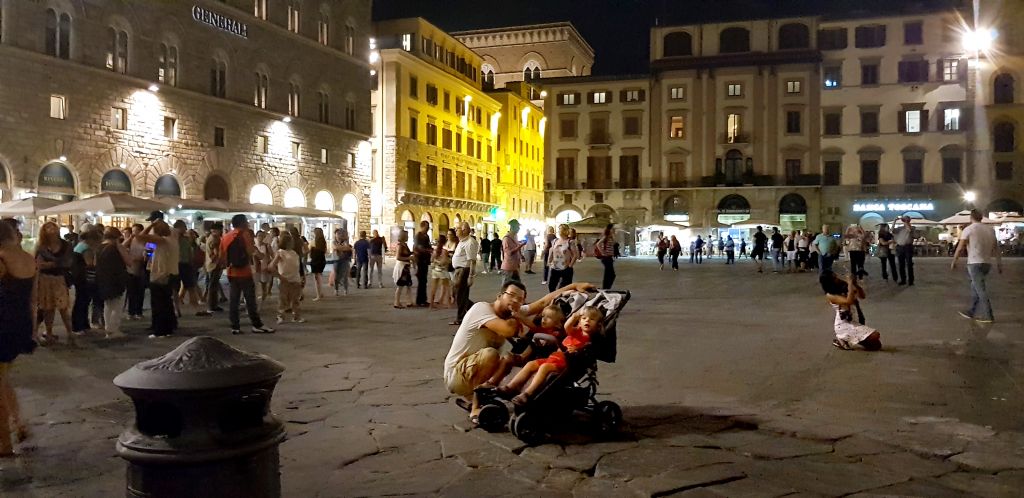
We also visited the Loggia dei Lanzi, an open-air pavilion with magnificent sculptures, where Cellini’s Perseus with the Head of Medusa stands out. This sculpture is an example of the skill of Florentine sculptors and a reminder that art here has always been closely linked to the political and cultural life of the city.
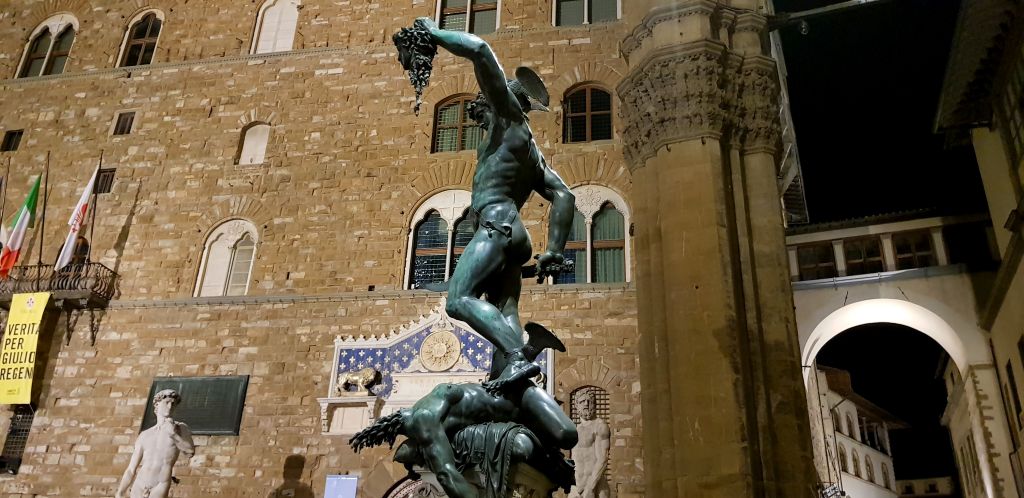
Ponte Vecchio Bridge
i
Ponte Vecchio is a bridge that is unlike any other. Its history dates back to the time of the ancient Romans, when a wooden bridge stood here. The modern version, built in 1345, has preserved its unique structure to this day.
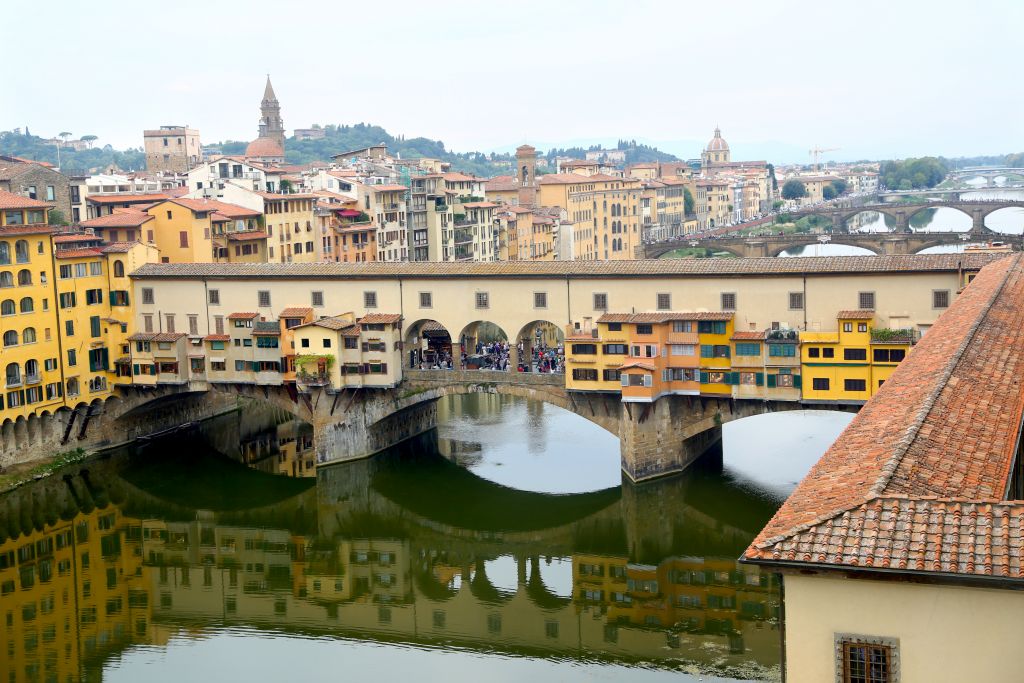
There were shops on the bridge as early as the Middle Ages, but jewelers only appeared here in the 16th century, when Duke Ferdinando de’ Medici decided to get rid of the butchers’ shops, which spoiled the aesthetic appearance and created a stench.
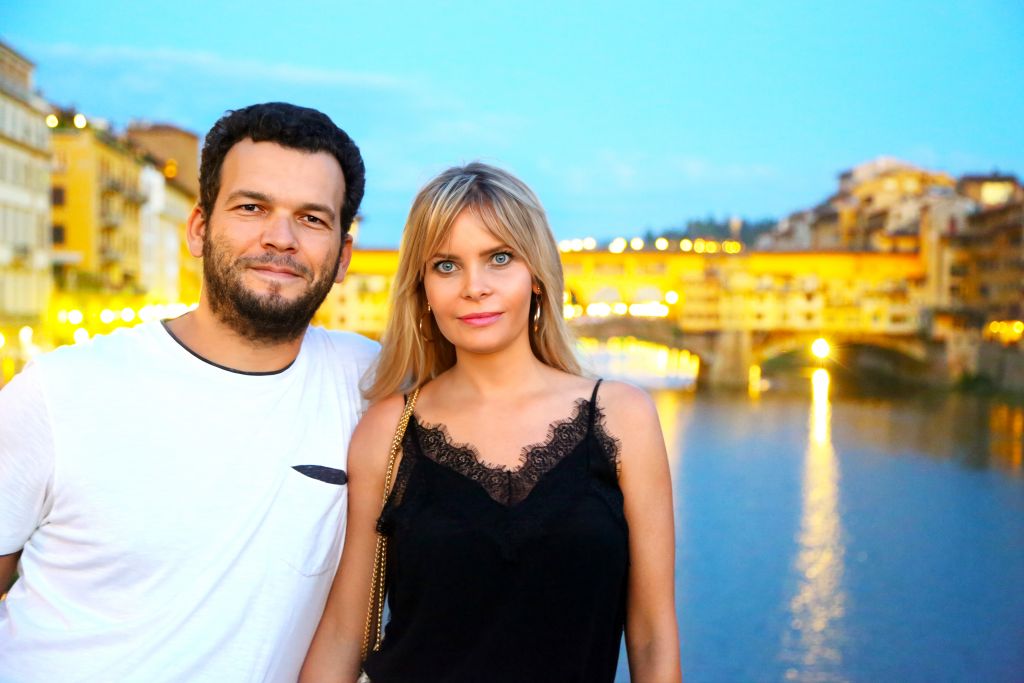
Interestingly, during World War II, the Nazis destroyed all the bridges over the Arno except the Ponte Vecchio, making it a symbol of resilience and survival. Today, the bridge is home to some of the best jewelry stores in the city, and a walk along it is a true immersion into the atmosphere of the past. My children and I walked along the Ponte Vecchio, enjoying the view of the Arno River and admiring the skill of the Florentine artisans who continue the traditions of their ancestors.
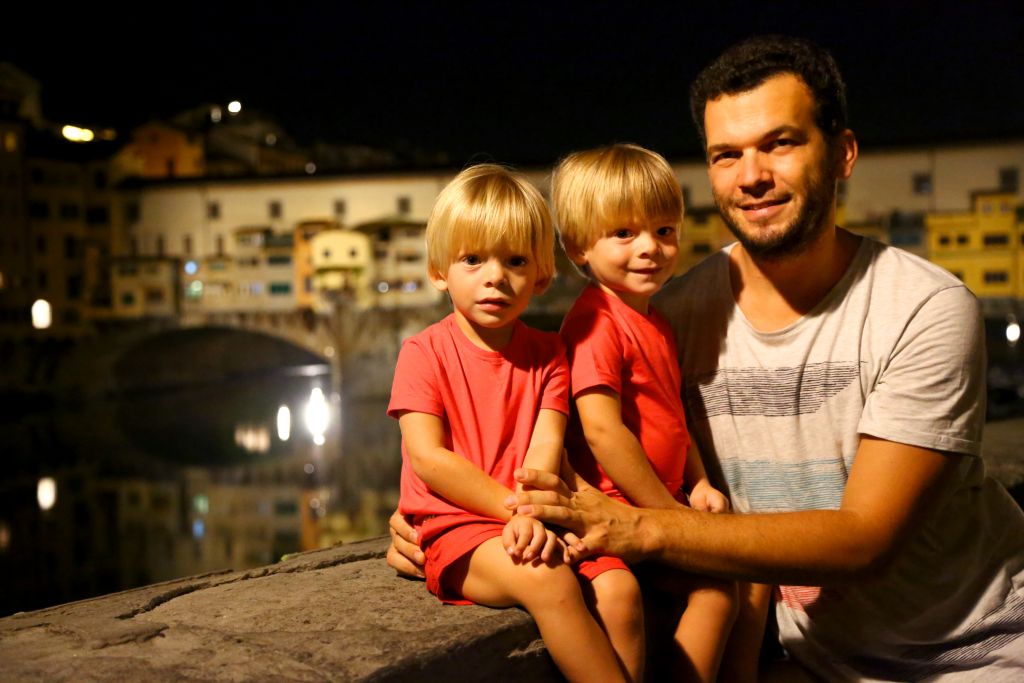
Palazzo Pitti and Boboli Gardens
i
The former residence of the Medici family, and later many other rulers of Florence, Palazzo Pitti is a magnificent example of Renaissance architecture. Commissioned by the banker Luca Pitti in the 15th century, the palace was designed to rival the grand buildings owned by the Medici.
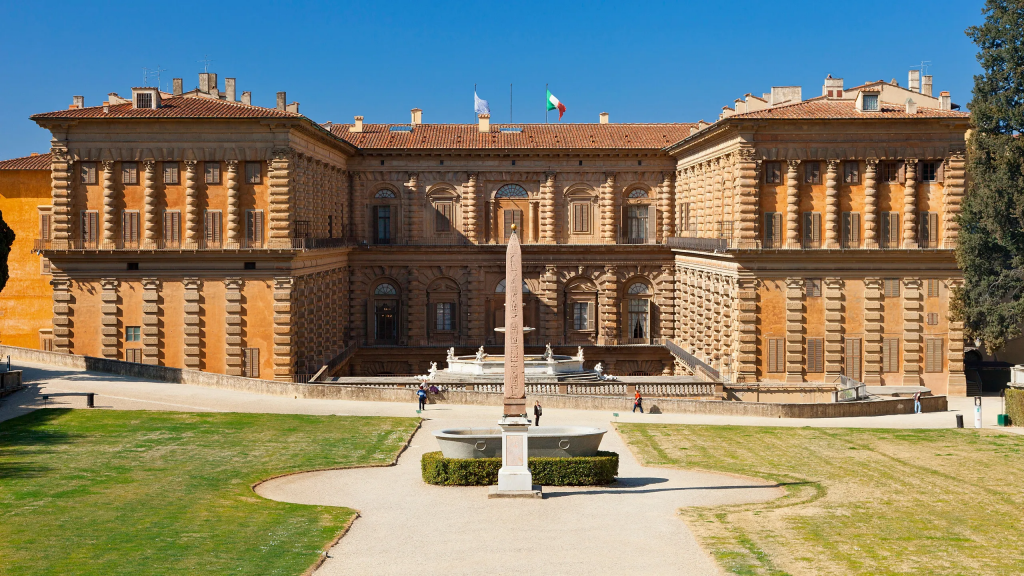
Palazzo Pitti was originally intended to be a modest residence, but over time it grew into one of the largest and most luxurious palaces in Florence. When the Medici acquired it in 1549, they not only made it their main residence, but also expanded the palace, adding numerous wings and courtyards. It became a symbol of the power and wealth of the Medici. Today, the palace is home to several museums, including the Galleria Palatina, which displays masterpieces by Titian, Raphael, Rubens, and many others.
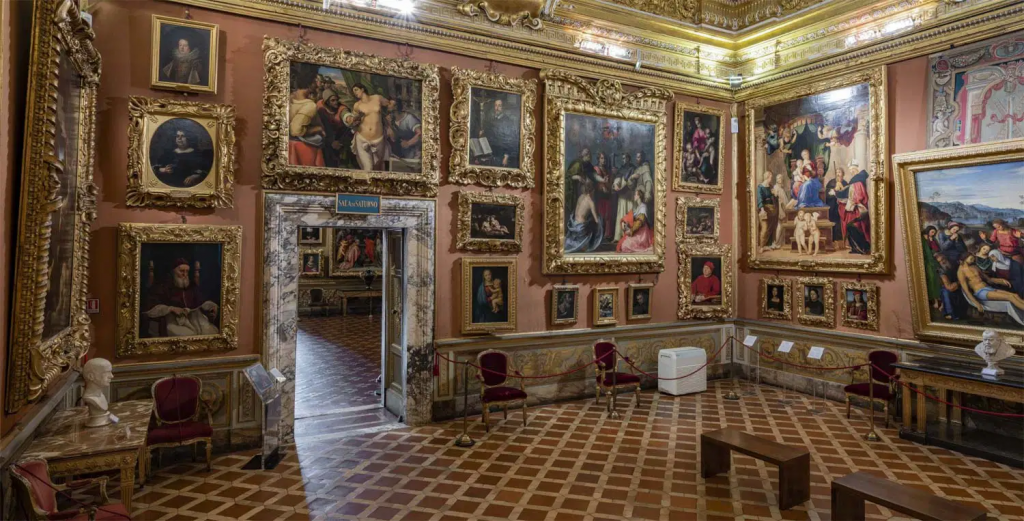
A walk with the children around the palace was a real journey through time. Each room is decorated with frescoes, paintings, and art objects that tell about the rich heritage of the Renaissance. We were able to look into the personal apartments of the Grand Dukes, where not only artistic, but also historical aspects of life at that time were revealed to our eyes. The children were especially impressed by the rich decoration of the halls and the realization that real kings and queens lived in these rooms.
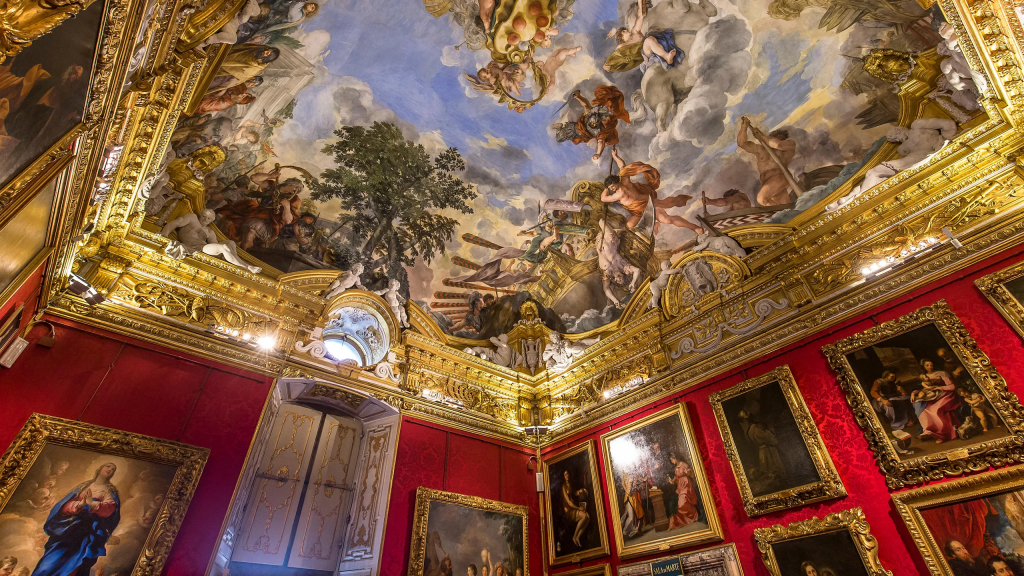
Behind the palace are the Boboli Gardens, which were the first in Europe created in the style of the Italian Renaissance. These gardens are a real pearl, a combination of nature and architectural art. The gardens were designed in the 16th century by the architect Niccolò Tribolo and later expanded. In them you can see numerous sculptures, fountains and even grottoes, each of which is a work of art. We wandered along the shady alleys, enjoying the coolness and beautiful views of Florence. The children happily ran around the lawns, and we admired the grandeur of the park landscapes.
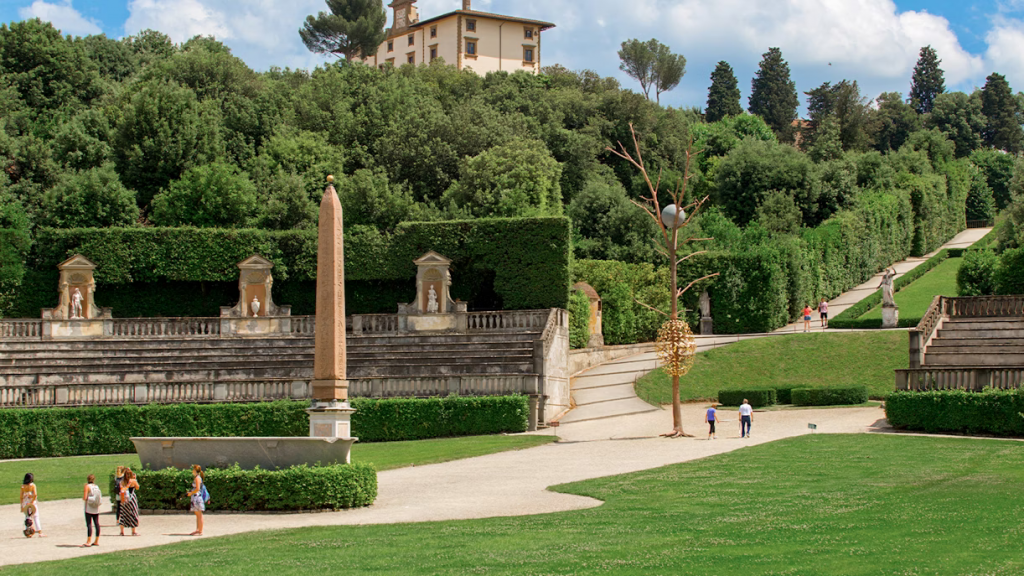
We were especially impressed by the Fountain of Neptune, whose majestic statue stands surrounded by greenery.
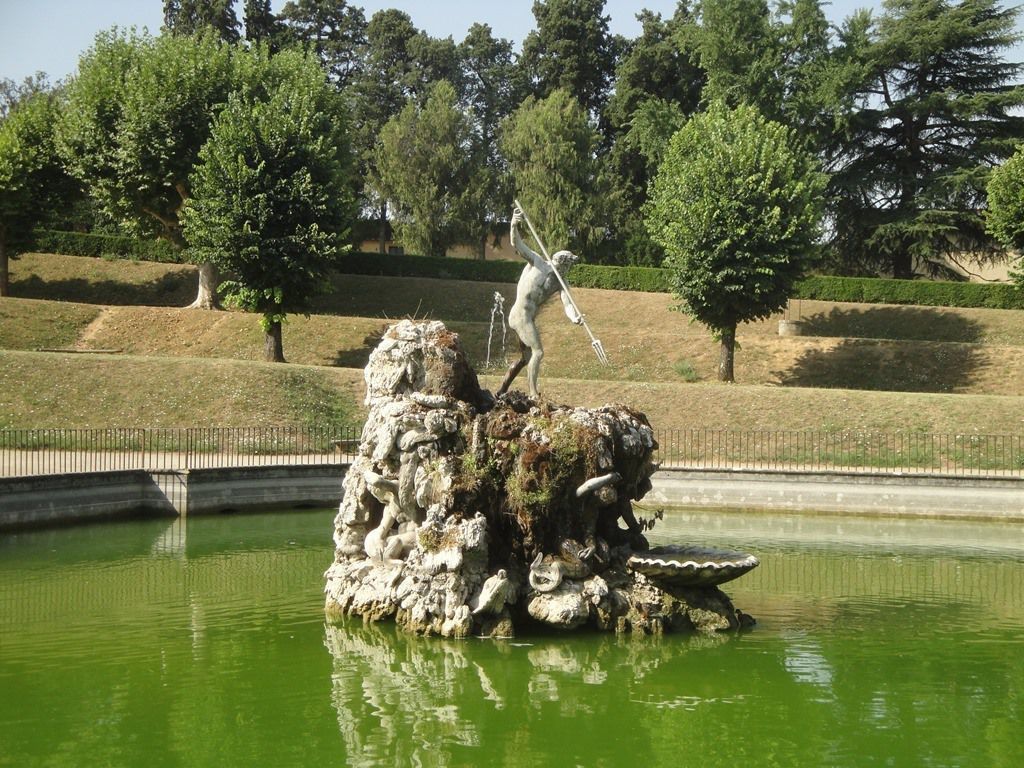
As well as the Buontalenti Grotto, an amazing architectural structure decorated with stalactites and mosaics.
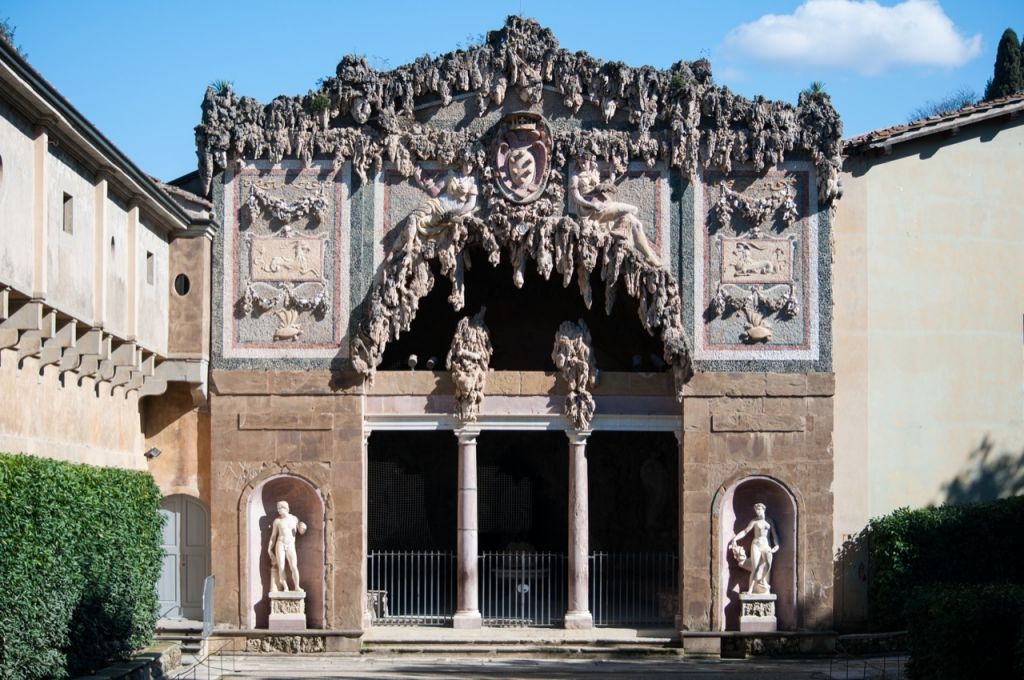
These places became an ideal break from the bustle of the city and allowed us to enjoy the silence and beauty of nature.
Basilica of Santa Croce
i
The Basilica of Santa Croce is the resting place of many great personalities of Italy. The cathedral, built in the 13th century, is considered the main Franciscan church of Florence and is the largest Gothic temple in Italy. It is famous for its tombs, in which such outstanding people as Michelangelo, Galileo Galilei, Machiavelli and Rossini are buried. For us, visiting this place became a kind of pilgrimage to the great minds and talents that changed the world forever.
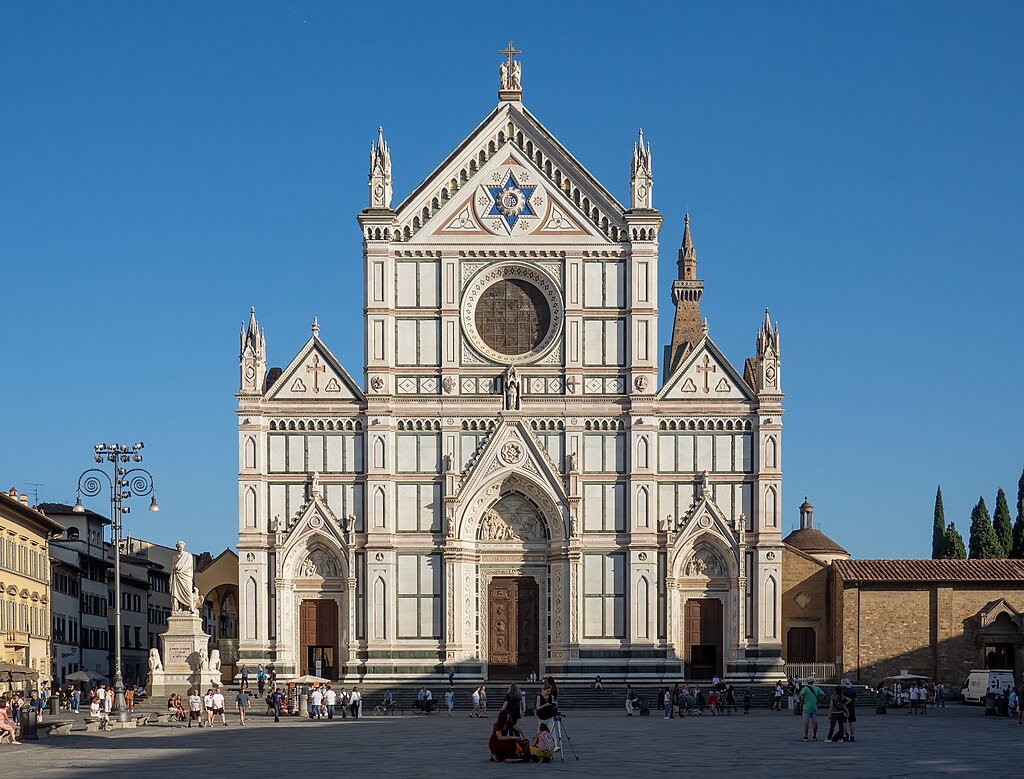
The interior of the basilica is impressive in its grandeur: high vaults, exquisite stained glass windows, an altar decorated with frescoes by Giotto. These frescoes are among the most significant works of art in the history of Italy.
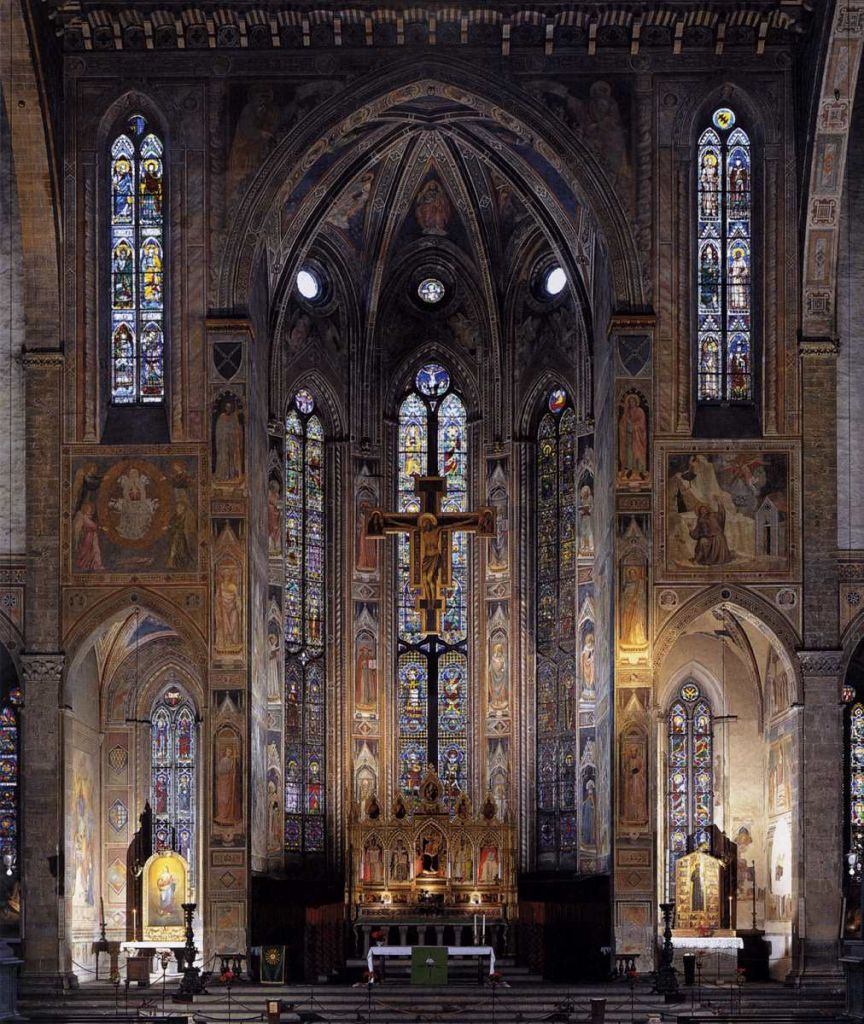
For the children, this church was the place where they first encountered such a concentration of history and art in one square. We explained to them who Galileo was and why Michelangelo is considered one of the greatest artists of all time. Although they are still small, such immersion in culture will certainly leave an imprint on their perception of the world.
Baptistery of San Giovanni
i
The Baptistery of San Giovanni is one of the oldest buildings in Florence, dating back to the 11th century. This octagonal building is made in the Romanesque style and decorated with white and green marble, which makes it one of the most recognizable monuments in the city. Its façade is impressive, but the real treasures are hidden inside.
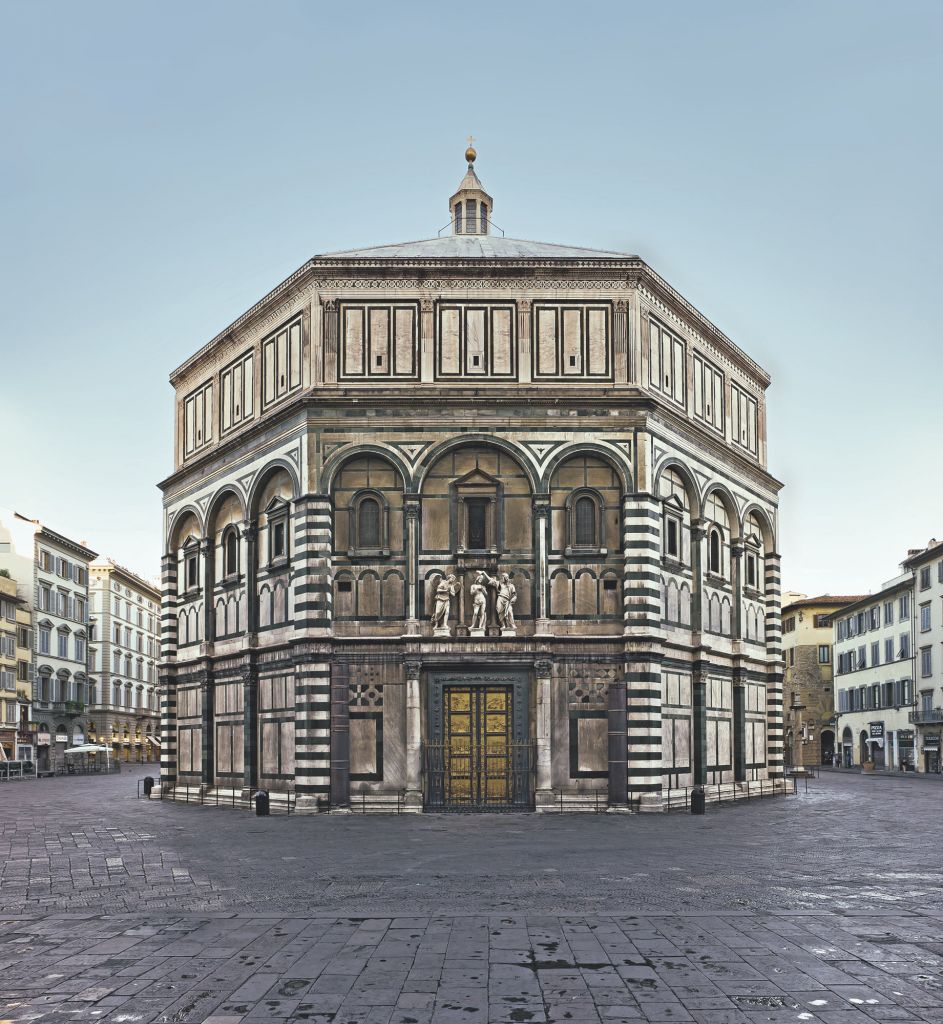
The main attraction of the baptistery is its magnificent bronze doors, known as the “Gates of Paradise”, created by the master Lorenzo Ghiberti. These doors depict scenes from the Old Testament and are a masterpiece of Renaissance sculpture.
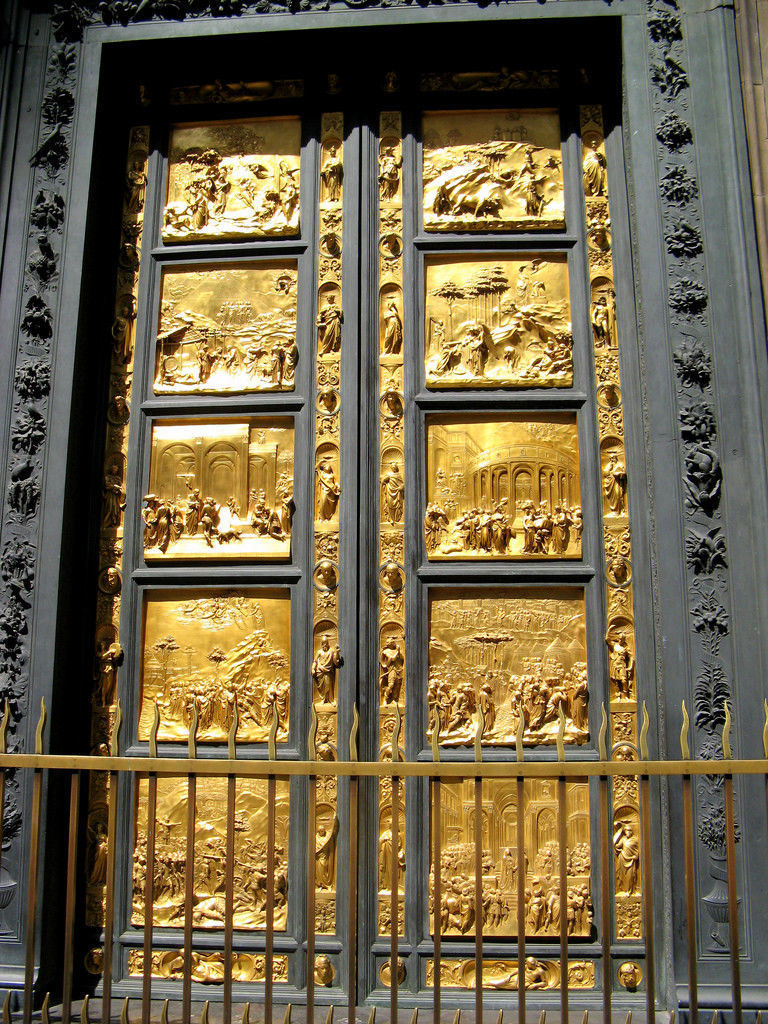
We could not pass by these doors without stopping to study them in detail. Each scene from the Bible was so carefully worked out that one could admire the small details for hours. We told the children the Bible stories depicted on the doors, trying to make them understandable and interesting.
Inside the baptistery there is a mosaic ceiling that amazes with its scale and beauty. Huge images of Christ and angels are executed with stunning precision, and scenes of the Last Judgment are striking in their drama. This ceiling, created by Byzantine masters, is one of the most impressive mosaics in the world, and its views will remain in our memories forever.
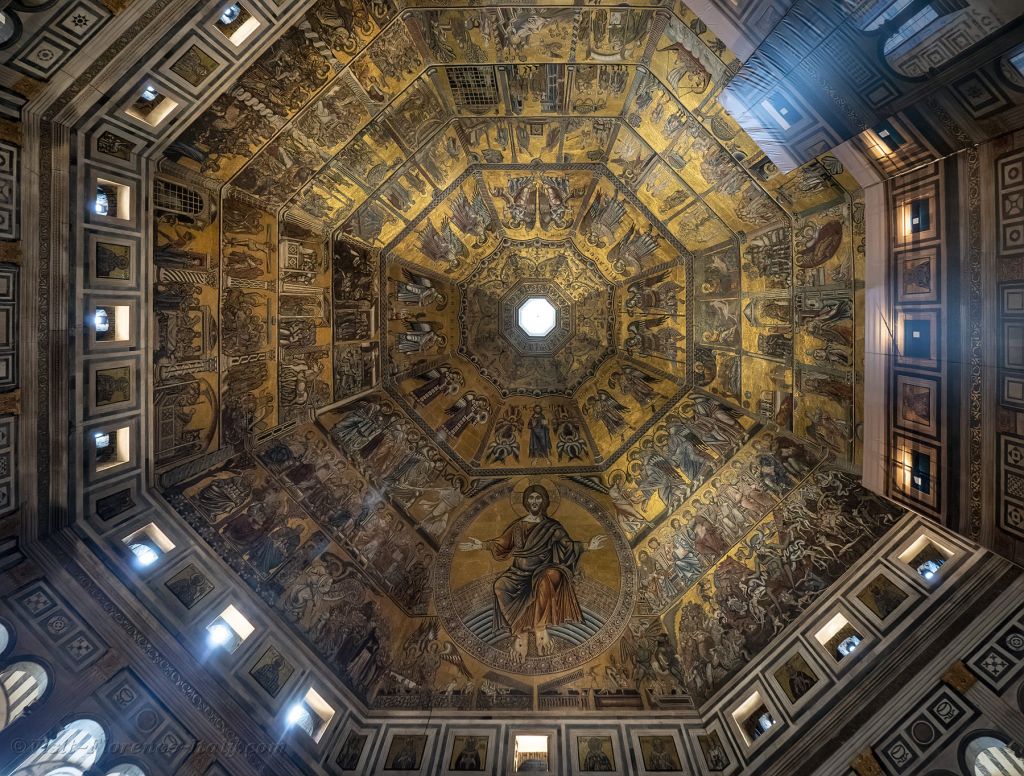
Florentine cuisine: restaurants and food
i
Florentine cuisine is a separate chapter of our trip. It is simple, but at the same time exquisite, based on fresh products that highlight the taste of each dish.
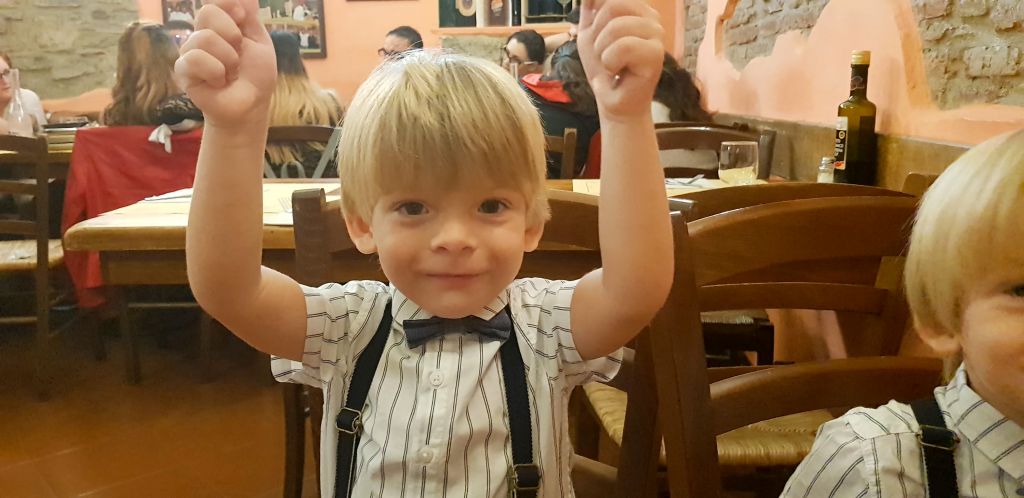
The main star was the steak “bistecca alla fiorentina” cooked on coals. It is a real delicacy that simply melted in your mouth.

We also enjoyed Tuscan soups, such as “pappa al pomodoro” – a thick tomato soup with bread, and ribollita – a hearty vegetable soup with beans and cabbage.
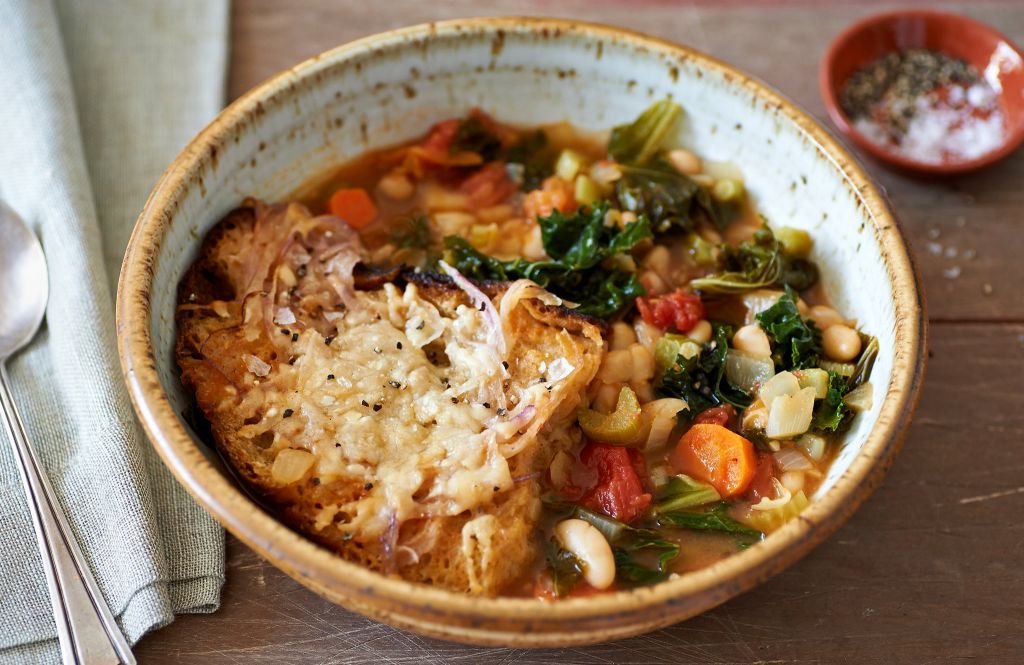
Restaurants in Florence are not only a place to eat, but also an opportunity to immerse yourself in the atmosphere of hospitality.
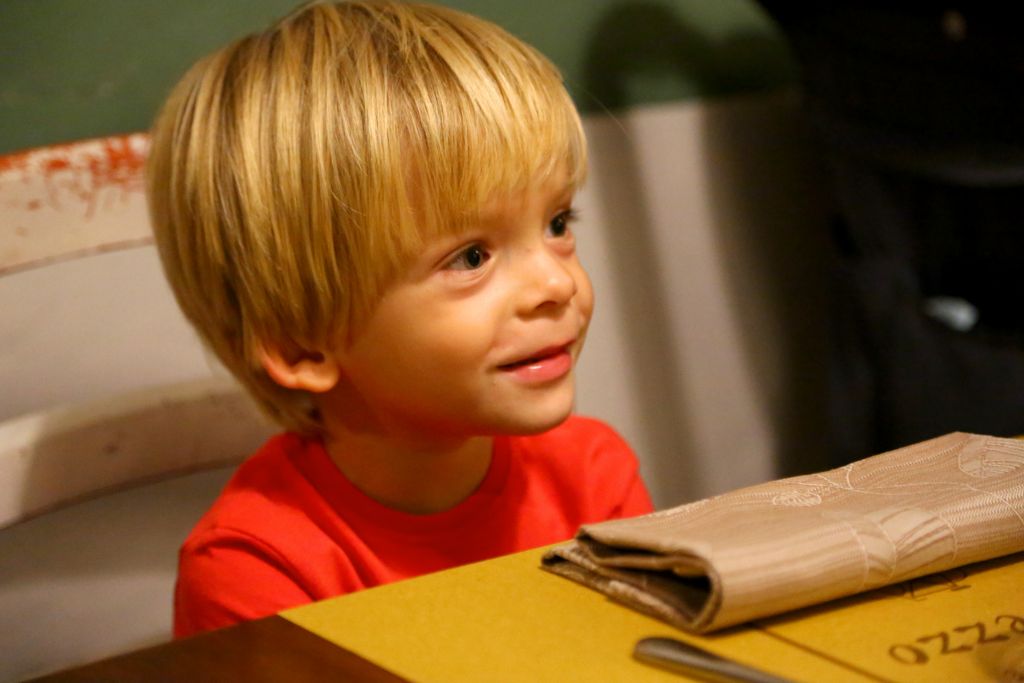
Personal impressions
i
Florence left a deep mark on our hearts. Traveling with two small children was not as trouble-free as we thought, although there were unavoidable difficulties.
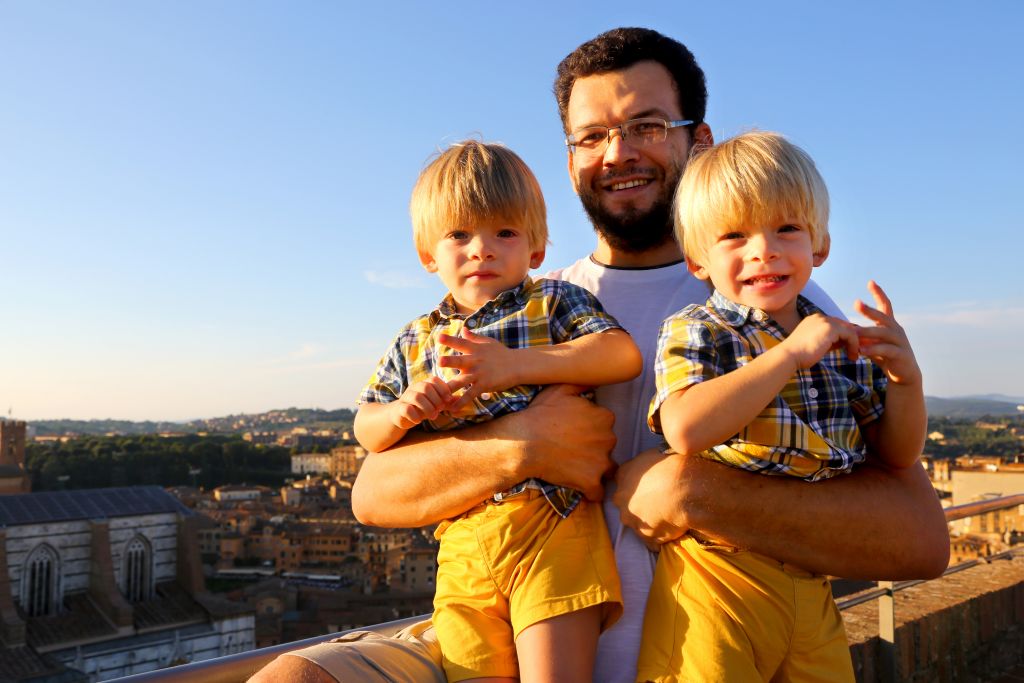
Each day brought new challenges, but also new discoveries. We felt like we were immersed in this amazing city, where every corner was steeped in history, art, and culture.
i
The children, although tired from long walks, were delighted by the unusual buildings, sculptures, and stories we told them.
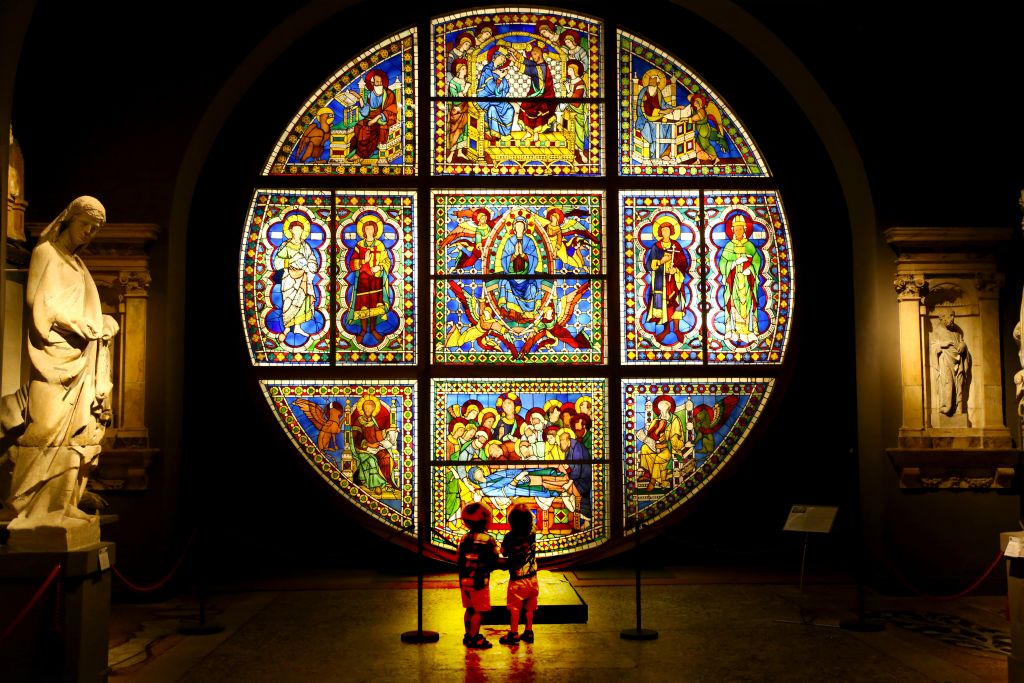
Our guys began to ask questions about the past, about artists and scientists, and this was the most precious gift for us – to see how their world was expanding and how travel turned into a real adventure for them.
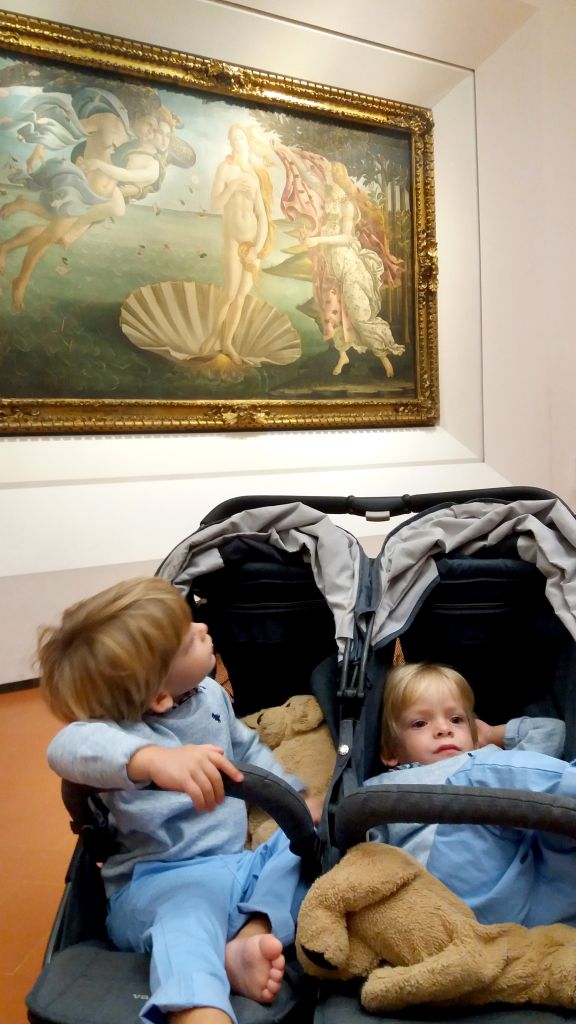
Conclusion
i
Florence became more than just a city we visited on a trip. It is a place where the past comes alive around every corner, where history and culture permeate every detail. We enjoyed every minute spent here, from strolling through majestic squares and exploring ancient cathedrals to the simple pleasures of life – delicious food in small trattorias and leisurely conversations with locals.
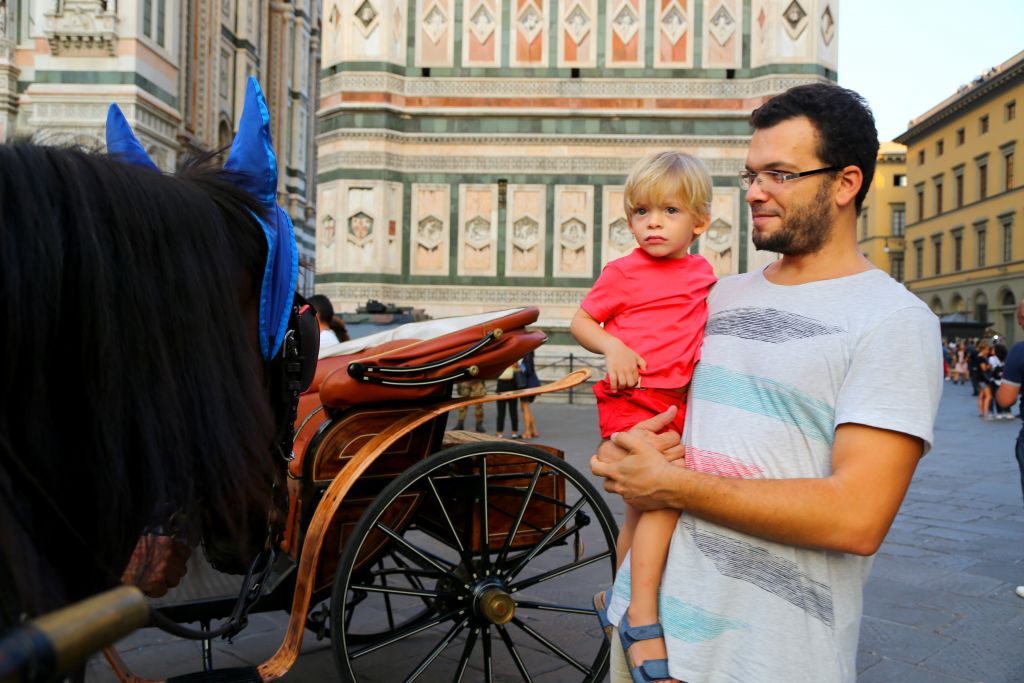
Our children loved Florence too. They were thrilled with every new discovery, from the fabulous beauty of the Palazzo Pitti to the breathtaking views from the hills above the city.
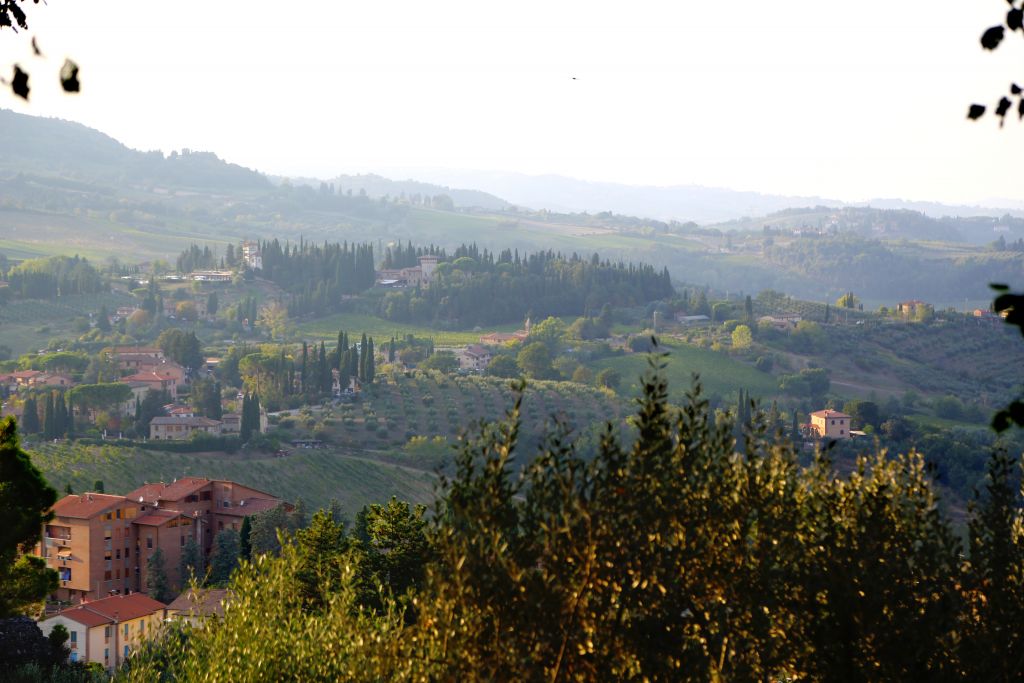
We saw how their eyes lit up at the works of art, how they asked questions about the great masters, and how they immersed themselves with us in this atmosphere full of magic and discovery.
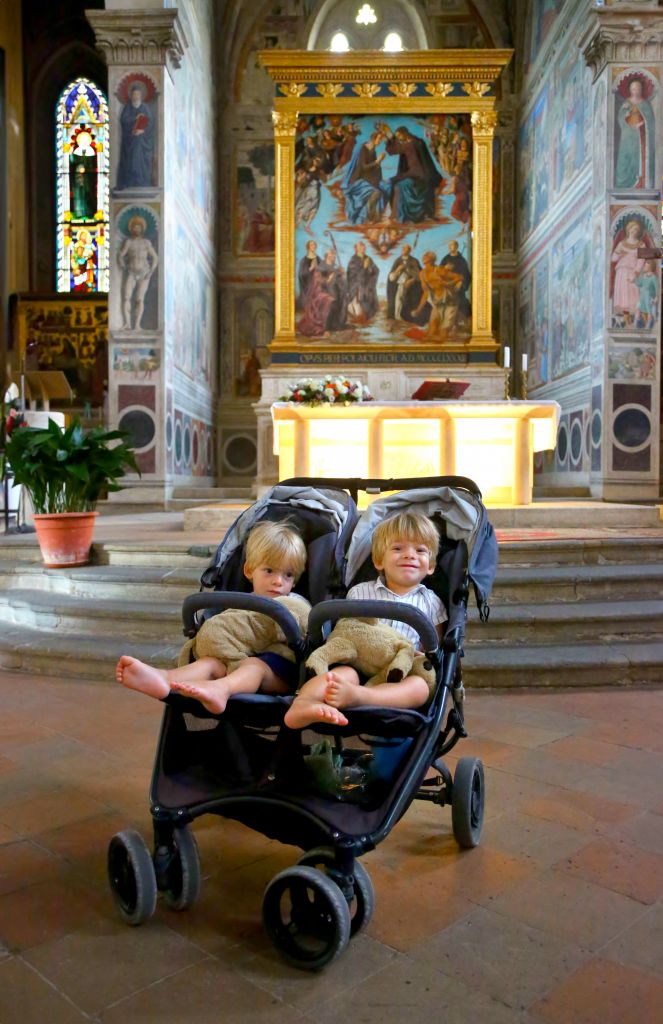
Florence is not just an open-air museum, it is a place where history becomes part of the present, and every journey turns into a life lesson.
Old, charming Florence has an amazing ability to transport you to another century. Its warm, narrow streets, ancient buildings with graceful architecture and secluded squares fill the heart with a sense of peace and awe. This is a city where the past and the present coexist harmoniously, where you can enjoy modern conveniences without losing touch with ancient traditions. This is its unique charm.
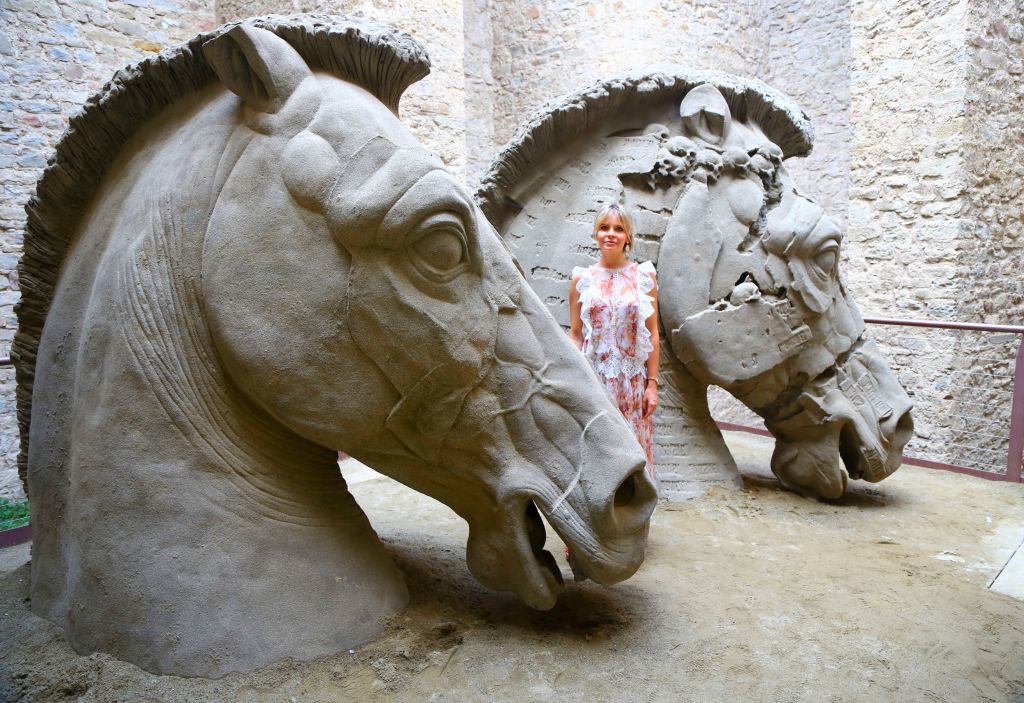
When we walked around Florence with our children, it seemed as if time had stood still. This city was able to give us not only vivid impressions, but also a unique feeling of warmth and comfort, despite its grandeur.
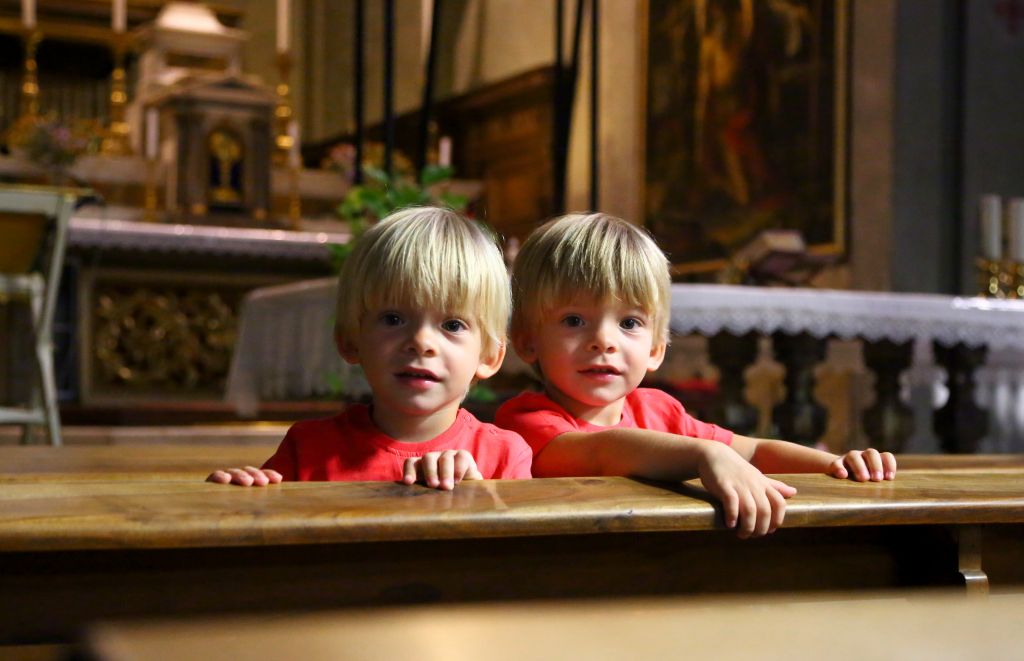
We left a piece of our hearts here and are looking forward to the day when we can return. Florence is a city that never ceases to amaze and inspire, and we hope to one day again immerse ourselves in its unique atmosphere, where every moment is filled with history, art and true Italian hospitality.
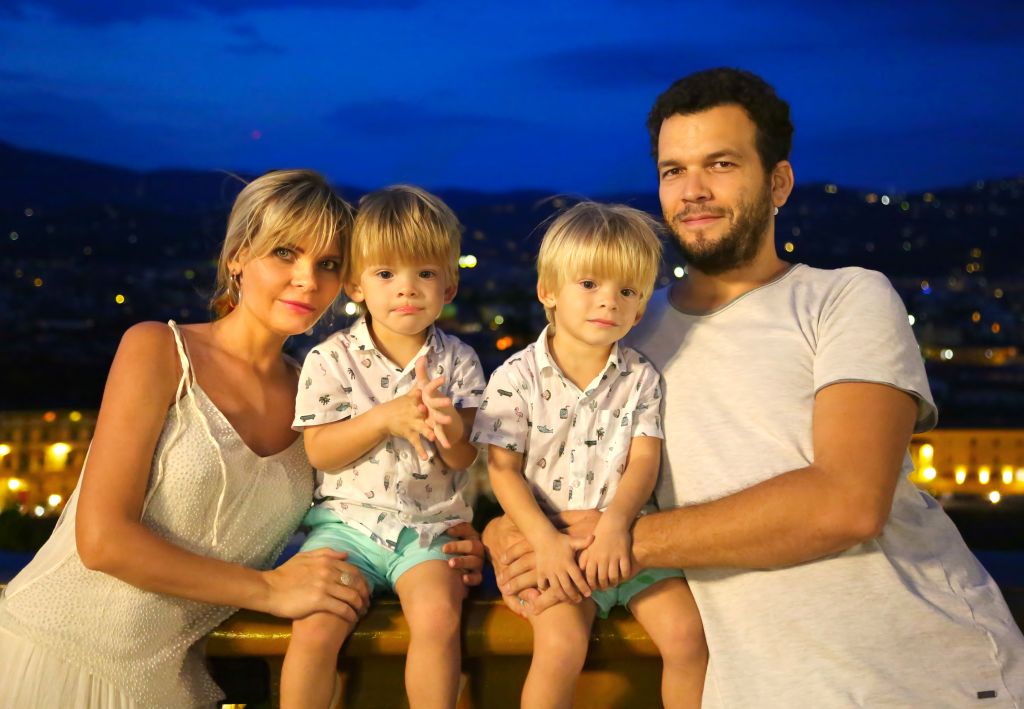

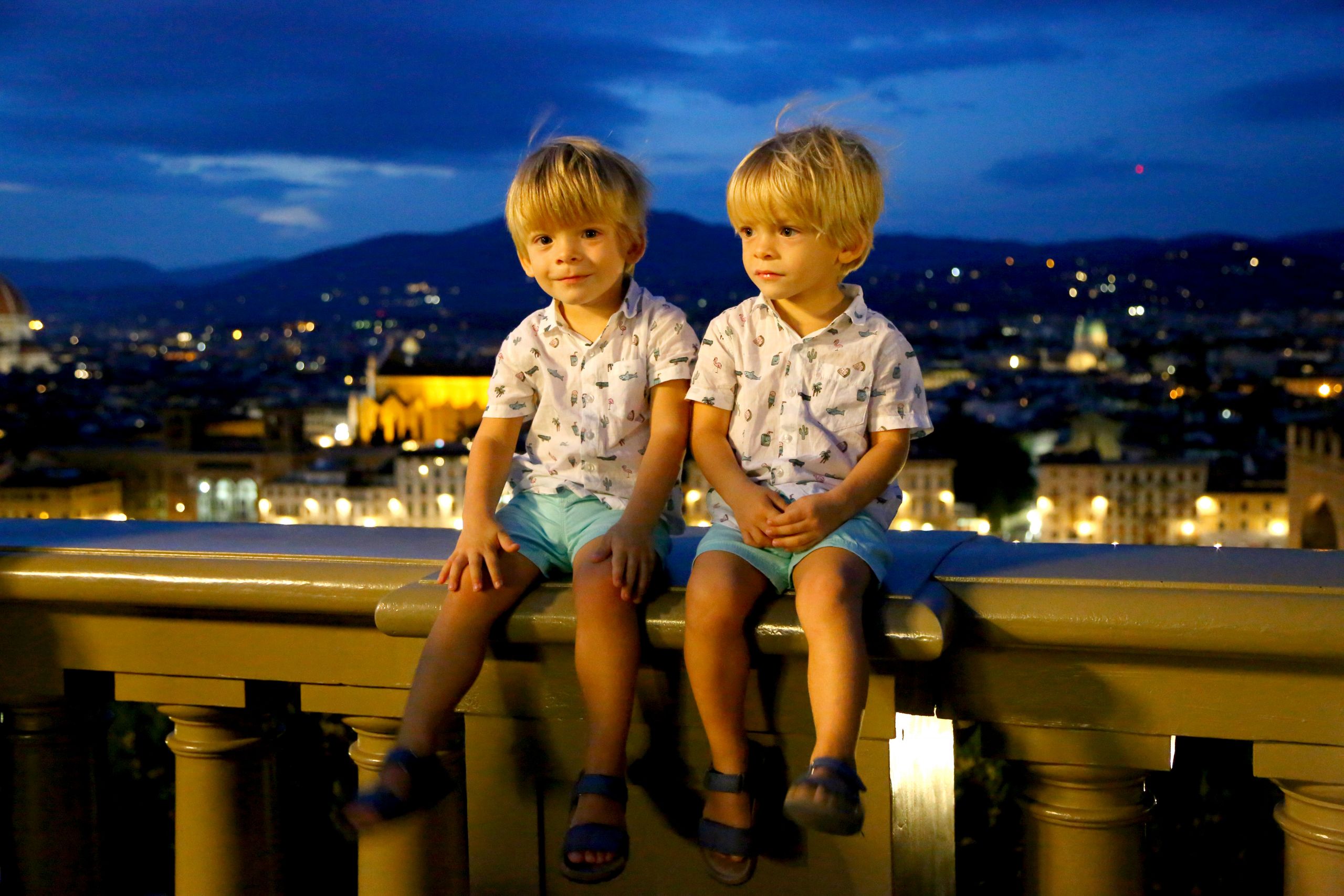
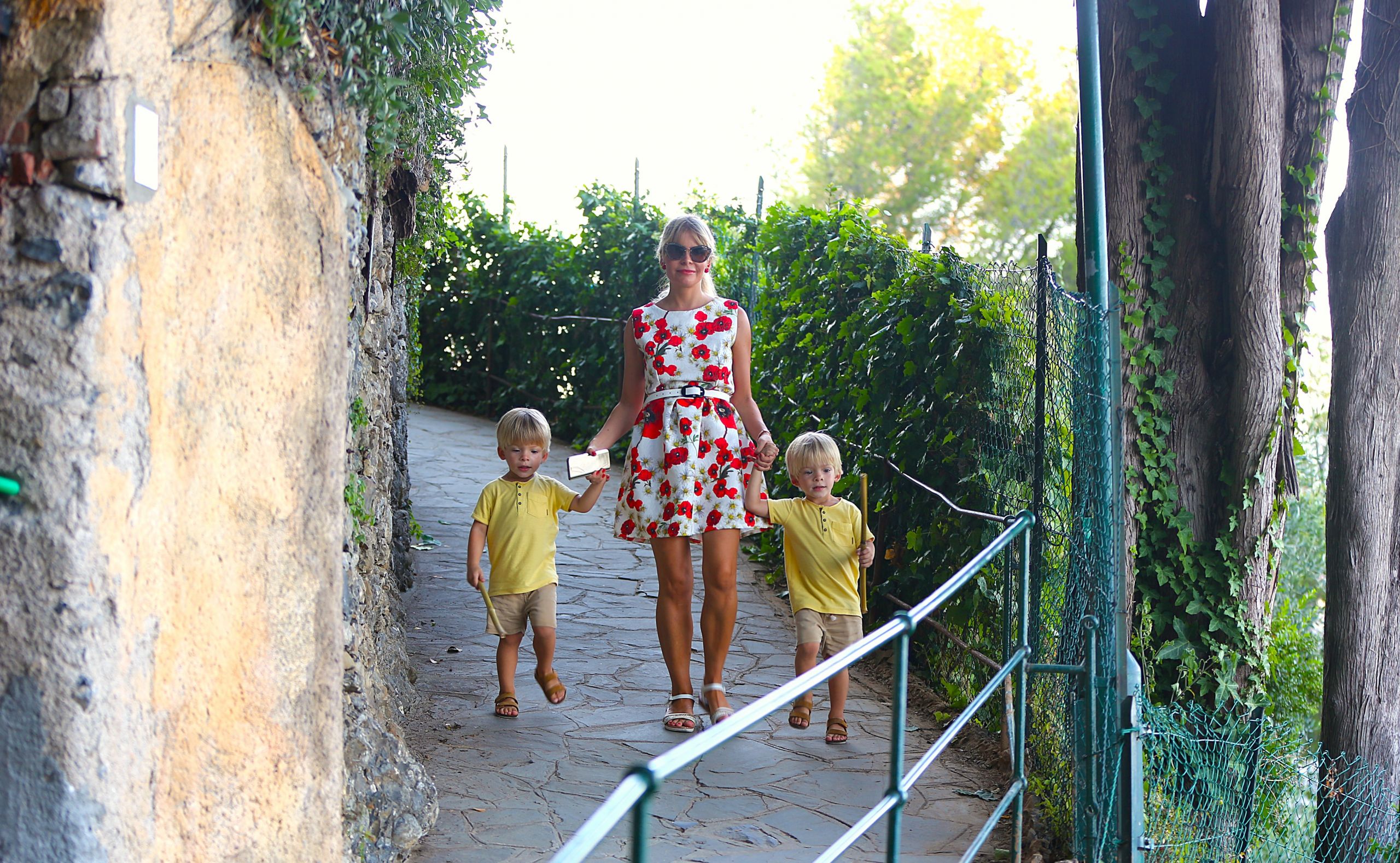
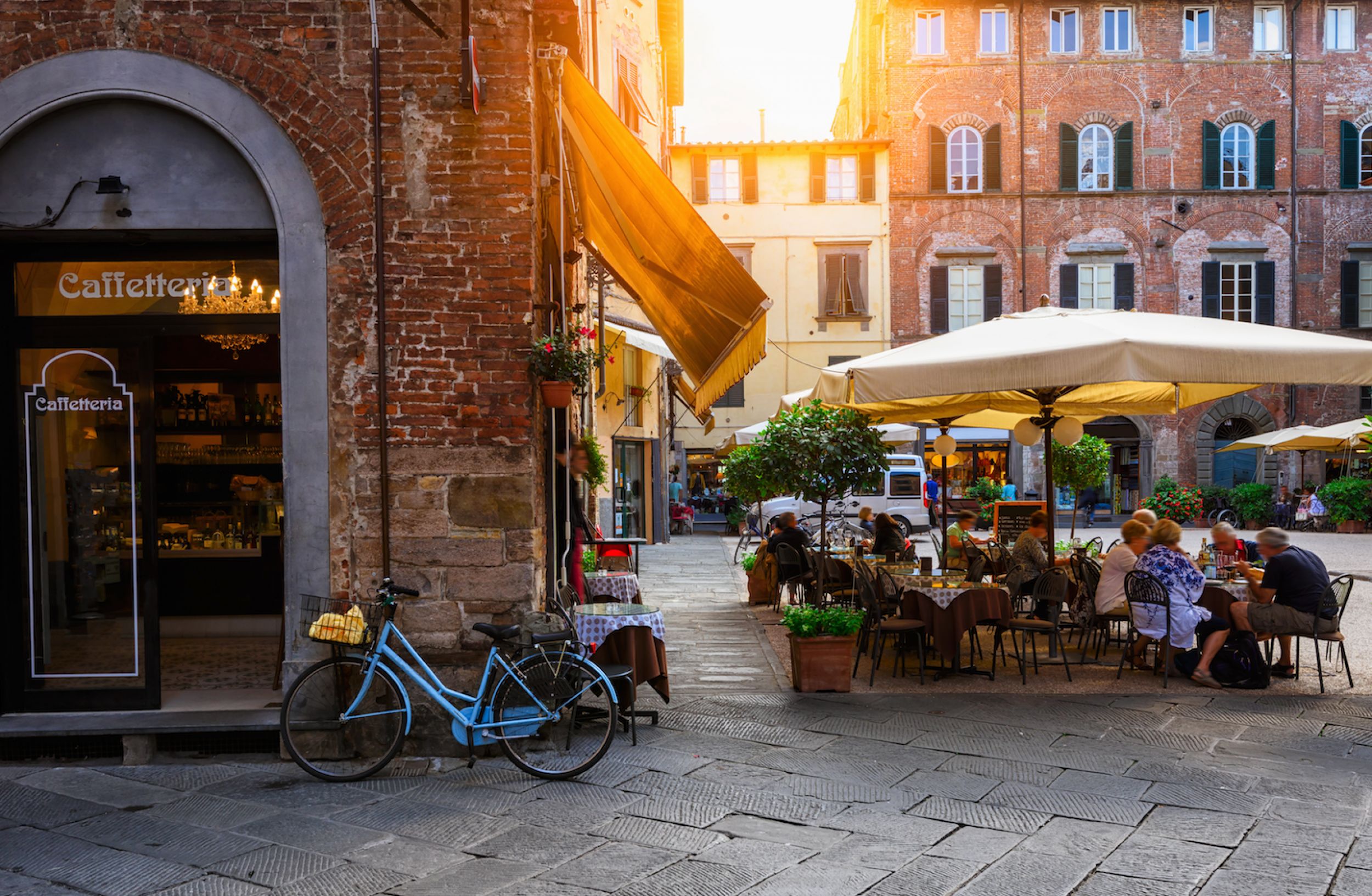
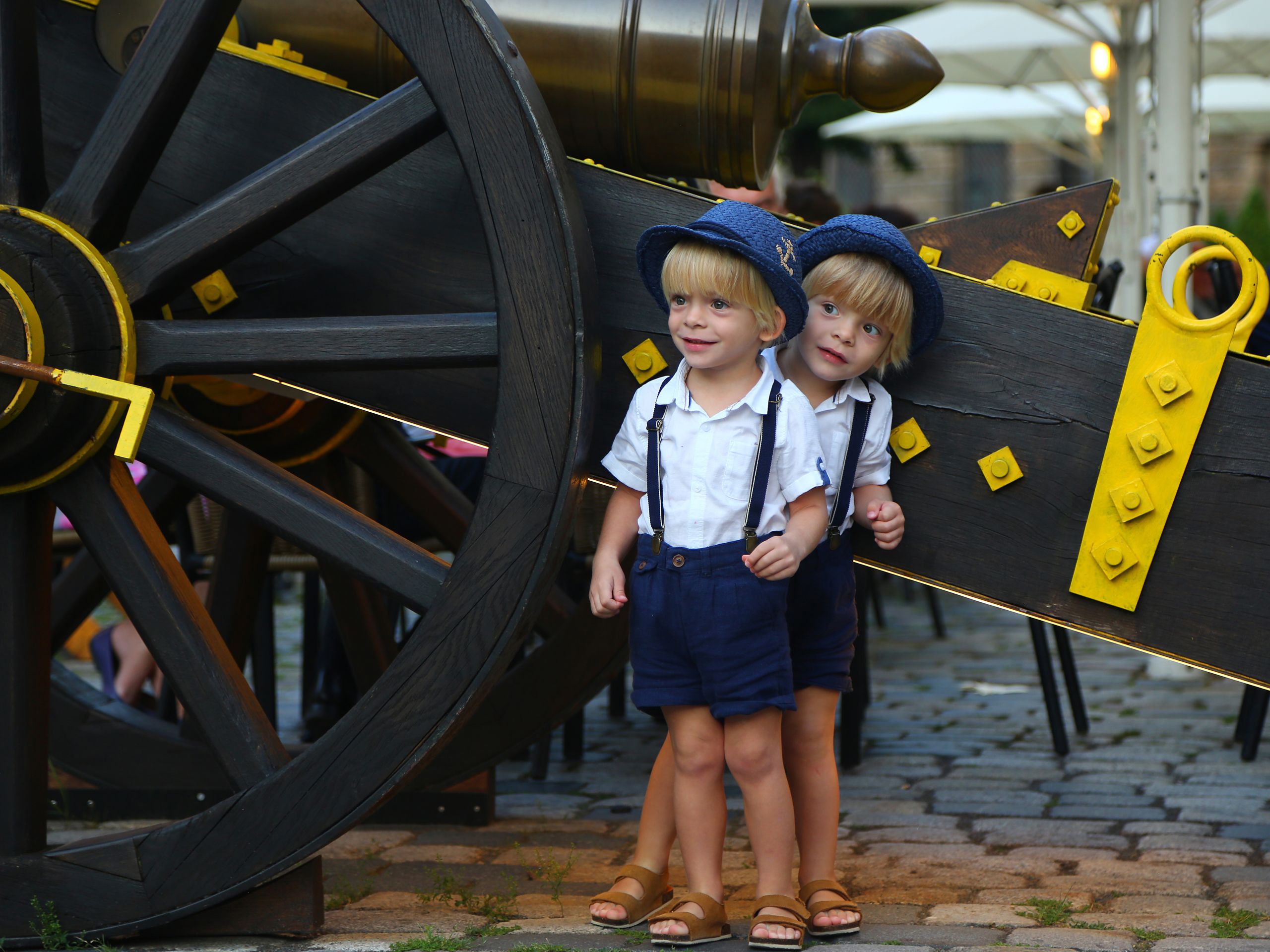
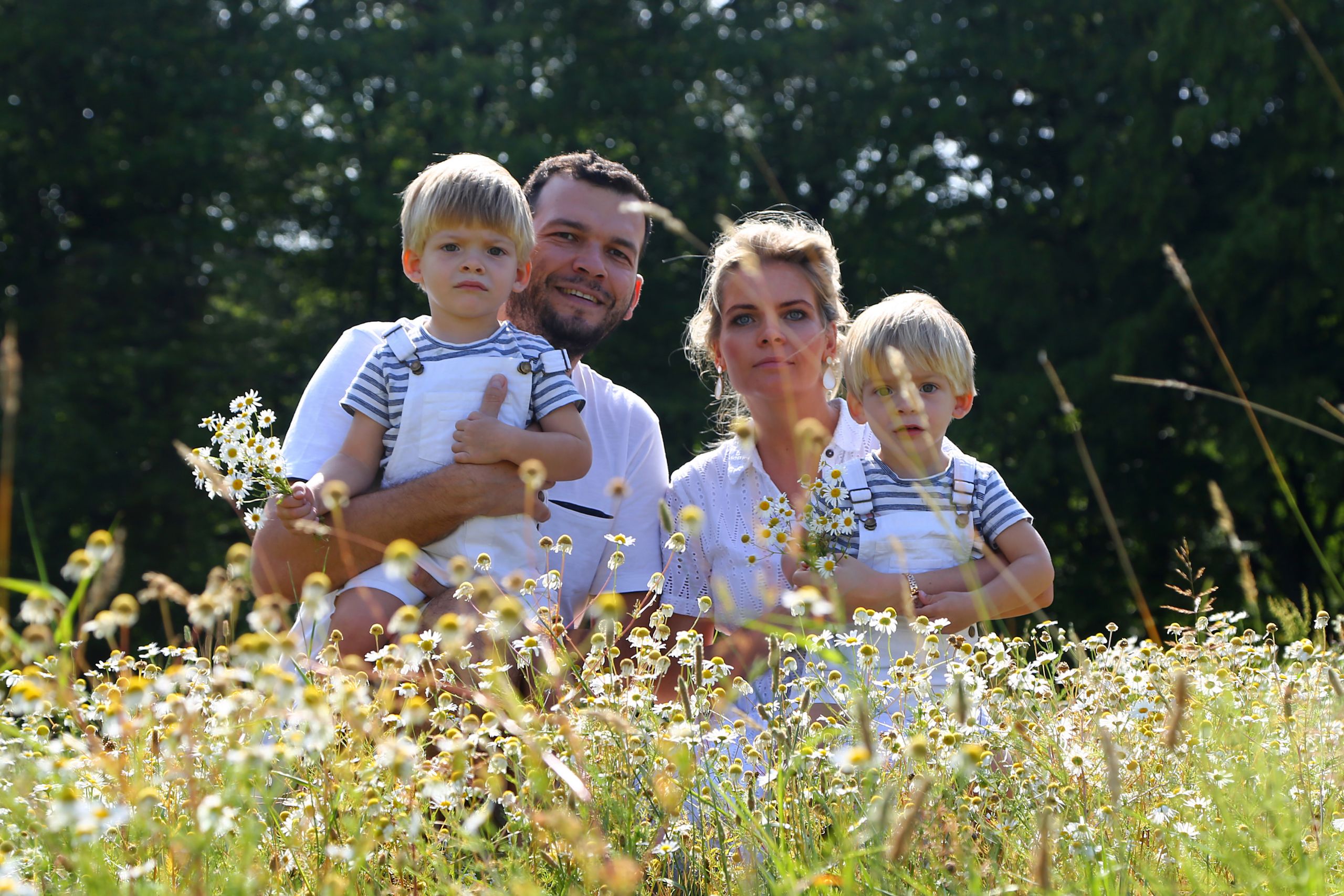
Leave A Comment